2023 Activity Report
March Activity Report
31 March 2024
Global Japan Office Coordinator
KUBO Masako
This month, Japanese students from various universities visited Salamanca to attend short-term language seminars, and they had many opportunities to interact with Japanese language students from our university.
Also, “Japan Week” was held in the second week of March at the Nissai Center of the University of Salamanca. In the third week of March, students of the Department of Literature were in charge of organizing and holding events for another “Japan Week” which was also held at in the Department of Literature. Each event was unique, but it was a very fulfilling two weeks as many of the Japanese students participated in events during both weeks.
Additionally, there were also two hybrid sessions held regarding career paths after graduation. The first session was about advancing to higher education. In addition to explanations about Japanese government scholarships, there was also a graduate student who told everyone about their experience in completing a master’s degree program in Japan and who is now preparing to enter a doctoral program. The other session was about finding employment. Students were able to hear valuable information from students working in Asian companies in Spain, students who had gone to Japan on a working holiday visa, trainees at ICEX in Japan, and graduates who had gone to Japan on their own to find employment. Hearing about the students working in a variety of places may have helped the current students to create clearer goals about their future. For the professors, this session served as a reminder that we should strive to develop employable skills in students so that they can play an active role in the community after graduation.
The last week of March is “Holy Week” in Spain, so the university is closed, but with the end of this academic year approaching, many students have said that they plan to use this break to work on their graduation thesis, reports, and assignments. I hope that you can rejuvenate and accomplish your goals during this short break.
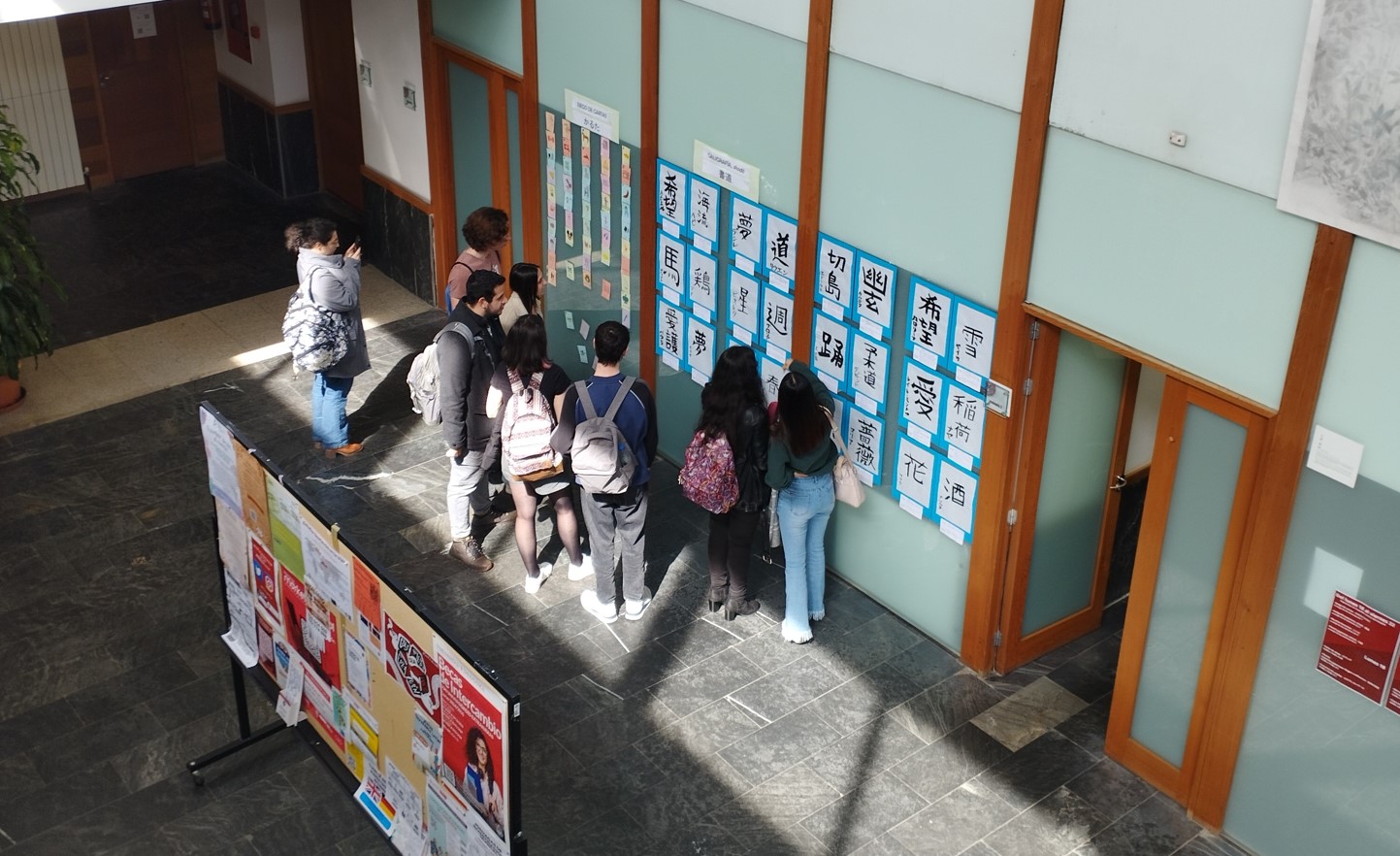
February Activity Report
29 February 2024
Global Japan Office Coordinator
KUBO Masako
This year, there was a week-long exam review period or an adjustment period for the start of the second semester after the examination period. Both students and teachers were able to fully recharge and prepare for the second semester before classes began. The Language Exchange Event is held once a week, and I hope it will continue to be meaningful as there are new members such as students who are here on exchange this semester (Photo 1).
However, in addition to classes, events have also started to take off all at once, so my days have become quite busy. Academic conferences, lectures, and workshops are held at the university, and the university's event halls host a wide variety of events, including film and theater screenings, music concerts, and poetry readings. Furthermore, Salamanca itself is full of cultural events, and I think this city puts a lot of effort into tourism, such as movie theaters, concert halls, and sports facilities. This is unthinkable in Japan, but many places here have free admission, and even if there is an admission fee, I think that it's much easier to enjoy than in Japan. Quite a few of the events are related to Japan, and this month there were lectures on sumo and screenings of Japanese movies and documentaries.
This month, I was able to take a tour to see the organs at the Salamanca Cathedral and attend part of a conference about composer Bach. During the tour, I was able to see one of the oldest organs in Europe (Photo 2), which is also said to be one of the oldest in the world, climb the narrow stairs up to the organ, and listen to a professional explanation and performance. On this tour, I learned that there are many different organs, but the Renaissance-style organ in the New Cathedral was restored by a Japanese person, and has become an opportunity for exchange between Japan and Salamanca (Photos 3 and 4). By the way, residents of Salamanca can enter this cathedral for free.
The conference about Bach was held in the Old Cathedral of Salamanca, and that alone made it an attractive conference (Photo 5). In fact, historically, music has flourished at the University of Salamanca. It still maintains its reputation for Baroque music.
Through learning Spanish, you can experience the many charms of Salamanca, which has a long history of literature and music.
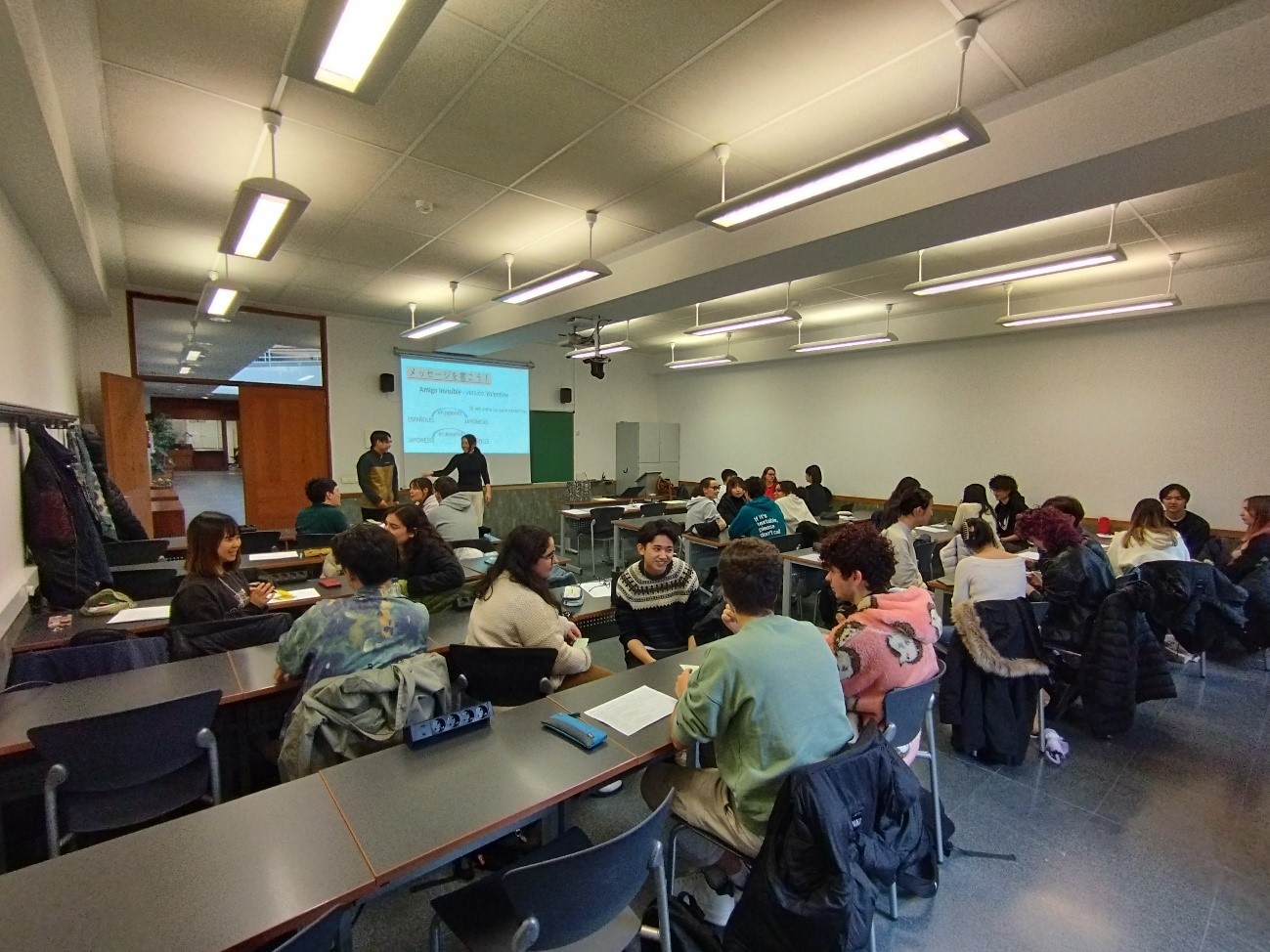
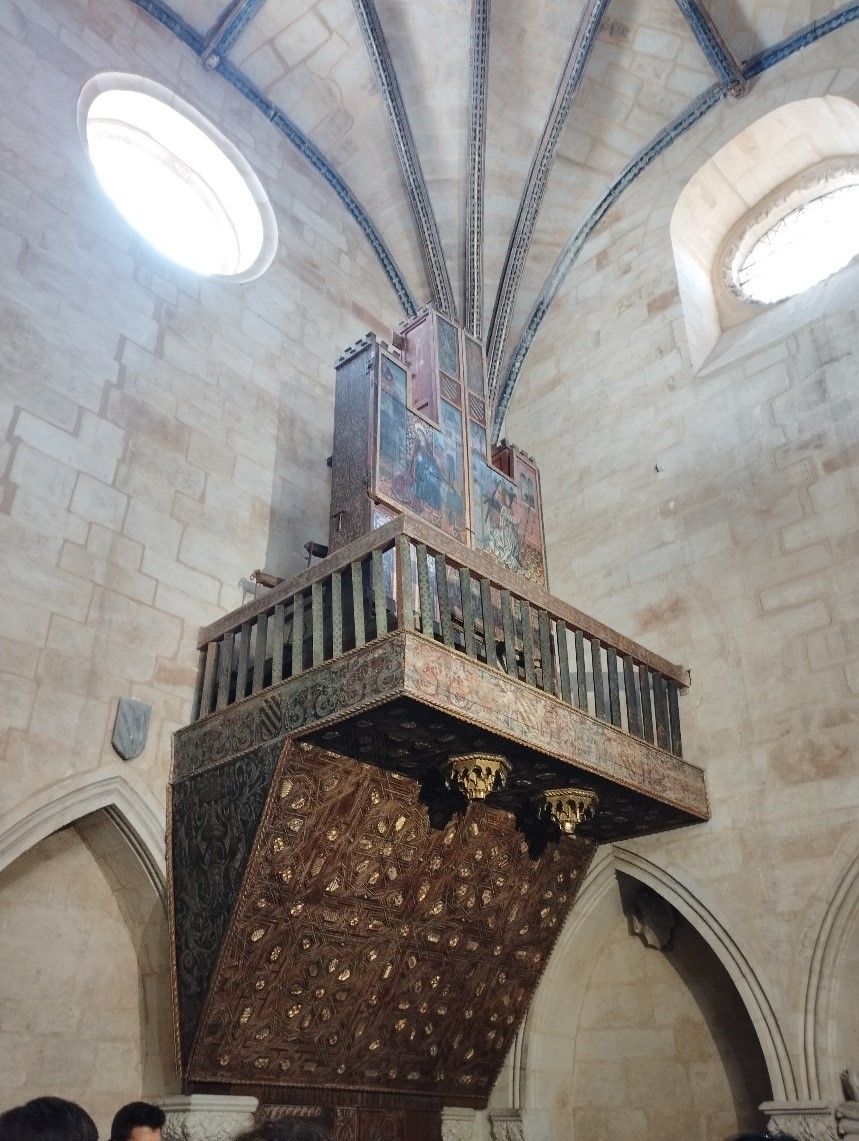
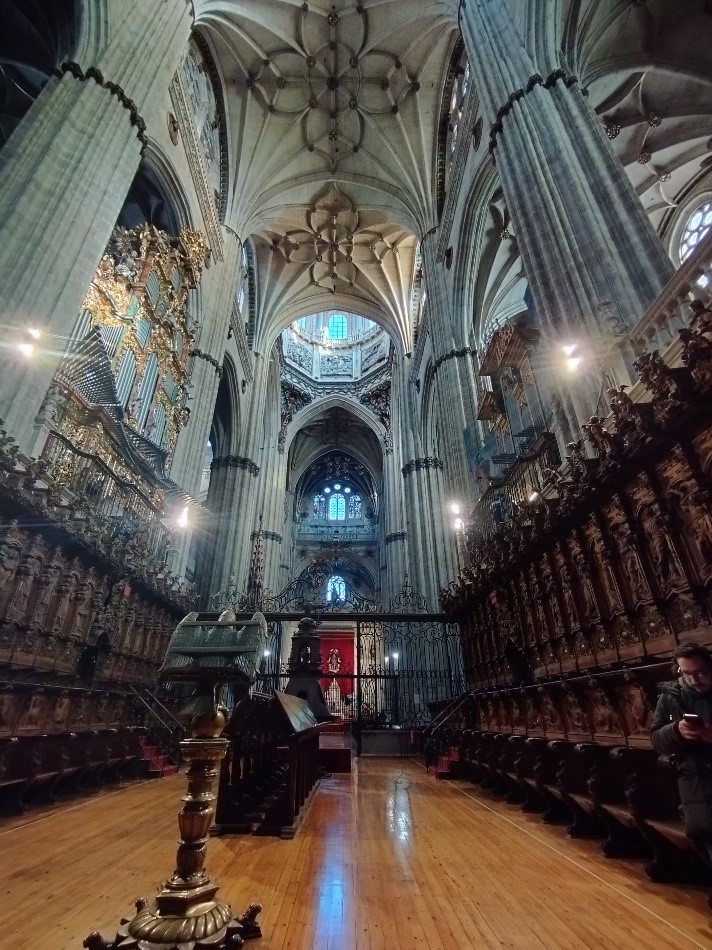
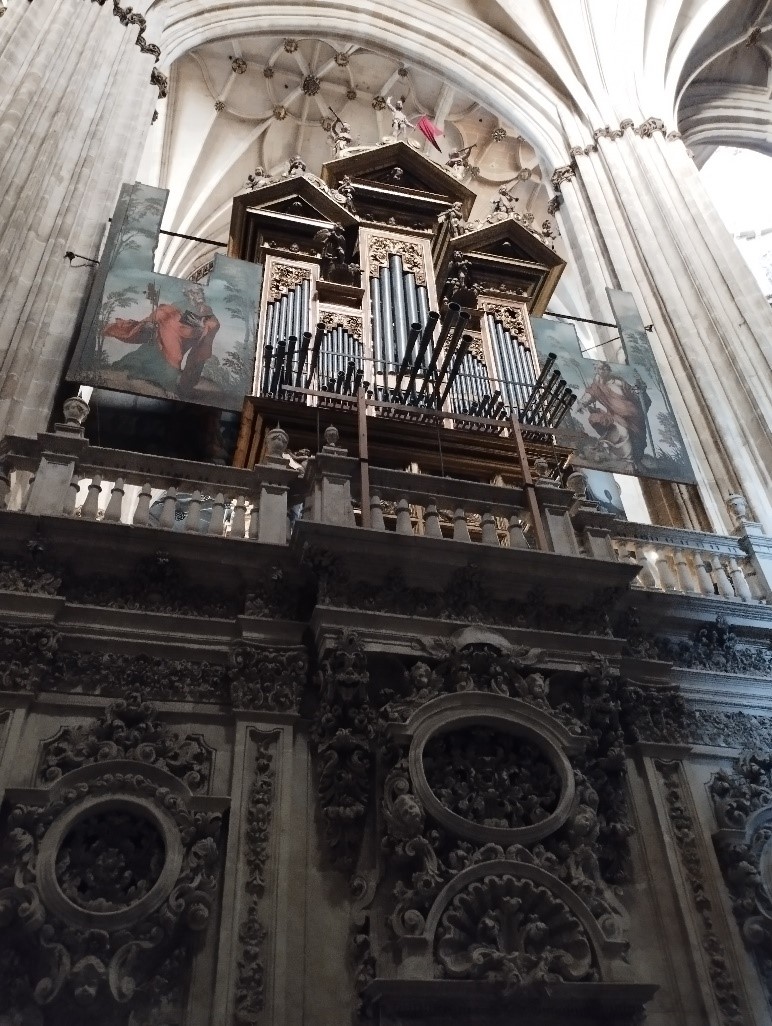
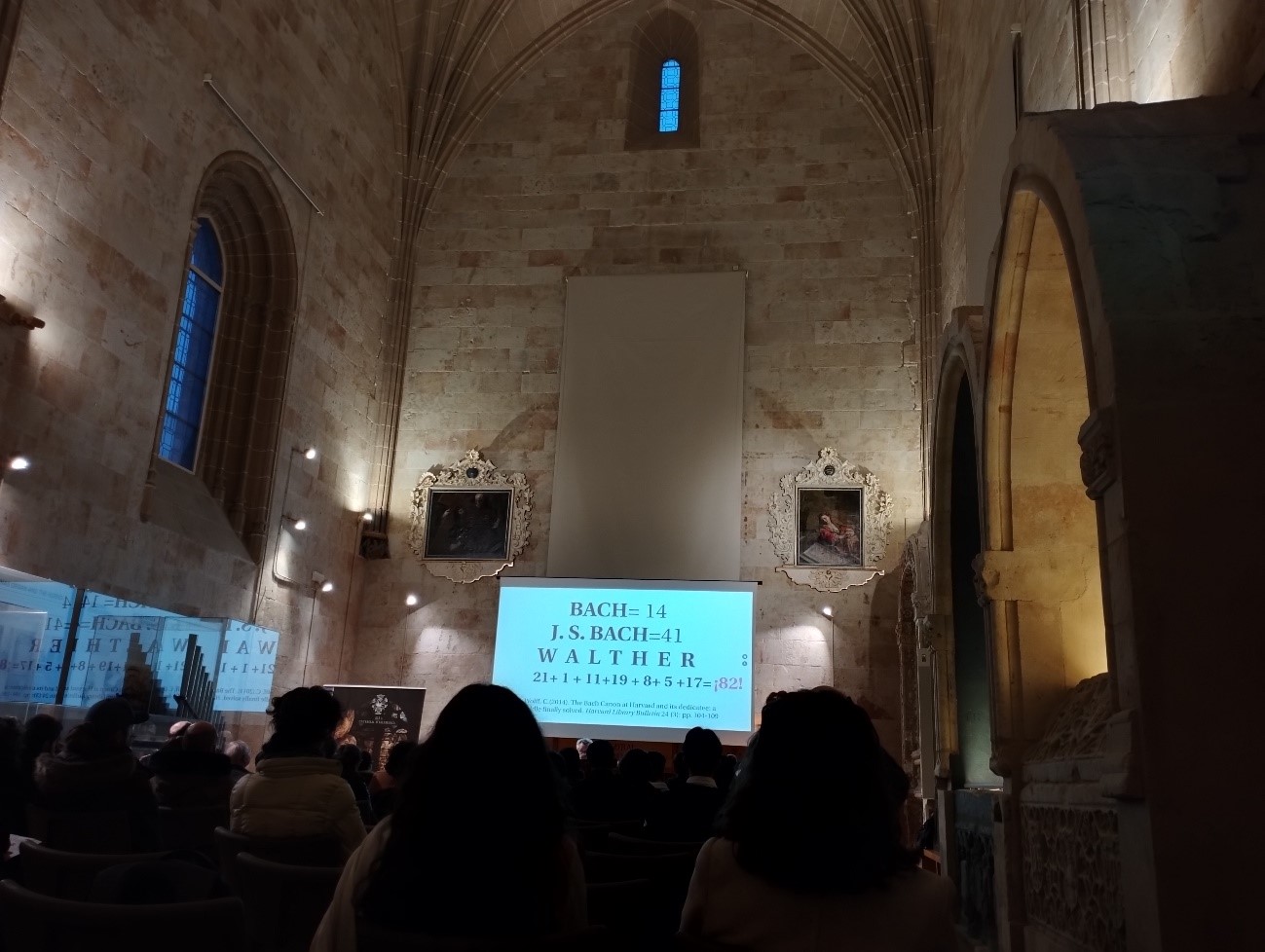
January Activity Report
31 January 2024
Global Japan Office Coordinator
KUBO Masako
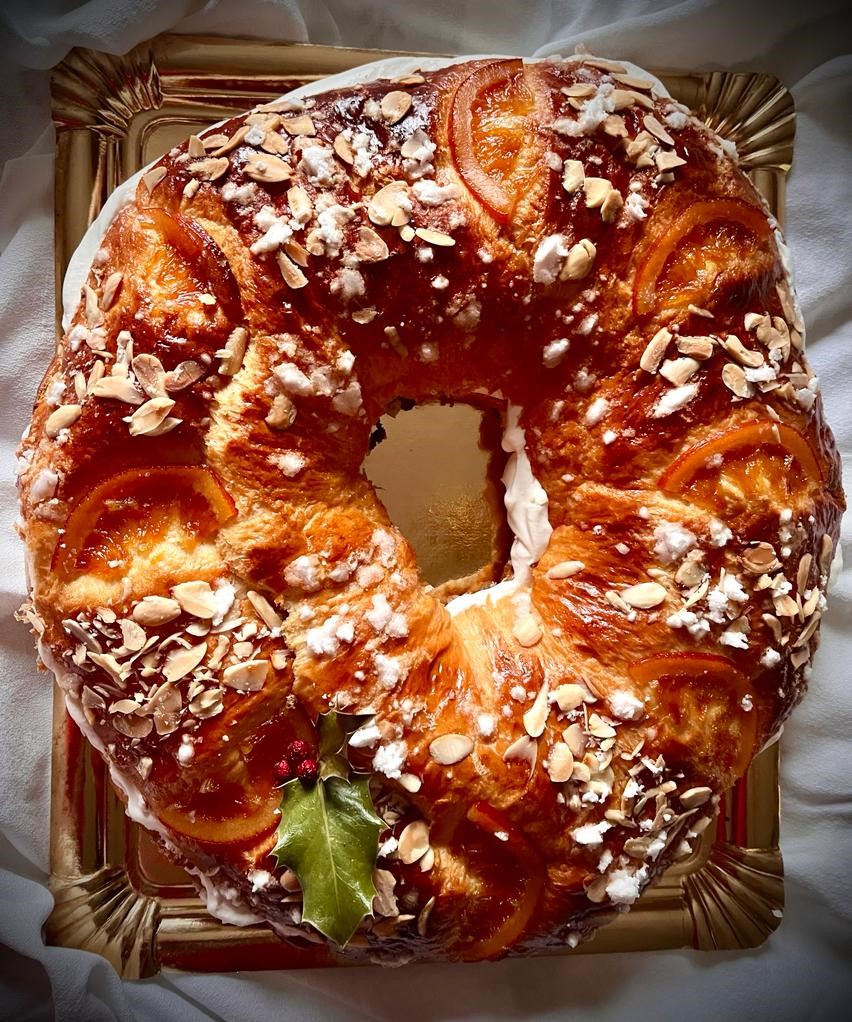
The examinations for the first semester subjects began straight after the winter break. This means that students seem to switch to study mode as soon as the new year begins. However, the Epiphany Day celebration on the 6th of January has become an important day for families to gather again for a meal. It is customary to eat a doughnut shaped pastry called Roscón de Reyes (King’s Cake) on this day (Photo 1). The fluffy sweet bread is delicious to eat on its own, but there are also versions filled with fresh cream or chocolate cream. The bread is usually decorated with candied fruit, slivered almonds, or pearl sugar, but some people are quite picky and try to avoid eating the candied fruit. Still, no matter where you buy this dessert, it always comes decorated with the candied fruit. Maybe this is because of the beautiful colors or because it is not considered to be Roscón de Reyes if it doesn’t have the candied fruit on top. Oranges, melons, watermelons, and cherries were probably very valuable in the past, but most people agree that they don’t like them. The fruits get left on the plate like they are a decoration that is not meant to be eaten. If you say that you like the candied fruits, then you may be told that old people tend to like them. Some of these breads have small dolls shaped like the three wise men who were said to come on this day to celebrate the birth of Christ, while some of the breads have fava beans inside them. The fava beans are used as a sign that it is your turn to pay for the Roscón de Reyes next year, but for children, it is just exciting to win something when eating the bread.
The weather this month has been good, with temperatures reaching May levels around the country. But on January 10th, after the Christmas holidays, the Spanish government made it compulsory to wear masks in hospitals and medical institutions. In hindsight, many people around me have been suffering from colds since November. This probably peaked during the holidays. Everyone started wearing masks again for the first time in a while, but within two weeks the order to wear masks had been lifted and everything went back to normal. This means that people were not required to wear masks but they were also not being encouraged to wash their hands. I think this is culturally difficult for Japanese people to understand.
After the three-week examination period, the student town of Salamanca became deserted as many students returned to their family homes until the start of the next semester. However, I passed many Japanese international students, and I could feel their enthusiasm for the short-term Spanish language seminar during the spring break. I think the shorter term allows them to focus on studying in an intensive and planned manner. I hope that you can spread your wings and get to know Spain in its entirety!
December Activity Report
31 December 2023
Global Japan Office Coordinator
KUBO Masako
This year, the national public holidays of the Constitution Day (6th of December) and the Feast of the Immaculate Conception (8th of December) fell during the middle of the week. It is common for people to use these holidays to go out for dinner with friends and colleagues or to prepare for Christmas before the Winter Break starts two weeks later. The day in between the two holidays is not actually a holiday, but many people in Spain take the day off as a ‘puente’ (bridge) to turn it into a long weekend. The university campus became deserted, but Plaza de Anaya, where the Department of Literature is located, was filled with tourists coming to see the cathedral and façade of the university. Although the inside of the faculty building is restricted to university staff, I often pass by tourists who just want to see the beautiful buildings. Salamanca has become a must-visit place, which was reflected with a temporary da Vinci exhibition, a mobile merry-go-round, and an expanded Christmas market which filled the Plaza de Anaya (Photos 1, 2 & 3).
Christmas is a huge event in Spain. It is customary to return home in time to spend Christmas Eve with family. Therefore, in the university town of Salamanca, there is a “New Year’s Eve for University Students” event held every year on the Thursday the week before Christmas. To bid farewell to 2023, both university students and non-university students can enjoy outdoor music in the Plaza Mayor and eat 12 gummy bears as the bell rings 12 times. Apparently, this tradition has been going for about 20 years, and recently other towns have started to imitate this event which may be why fewer people are swarming to Salamanca on buses like they used to. This year the event was on the 14th of December. Just after 8pm, I was returning home through the crowd, passing young people wearing sparkly dresses, open necked tops, and short skirts. I couldn’t help but think ‘Aren’t you cold??’.
As I was walking, I wondered whether my Japanese language students and Japanese international students were having fun together in the Plaza Mayor. As I thought to myself that maybe there wouldn’t be many students attending tomorrow’s class, I heard someone calmly call out ‘Sensei!’ from behind me. I wondered who this could be at this hour, and I saw that it was a Japanese language student. I asked if they were heading to the Plaza Mayor, but they said ‘I hate parties’ with a friendly smile. They were holding a warm-looking dinner in their hands. It made me realise that everyone has their own way of spending time and enjoying themselves.
The Language Exchange Event finished for this term on the 22nd of December. The 22nd is also the last day of class for this year. This year, many people gathered even on the Friday afternoon before Christmas, and everyone seemed to enjoy themselves. Next term starts in February. All the best until then.
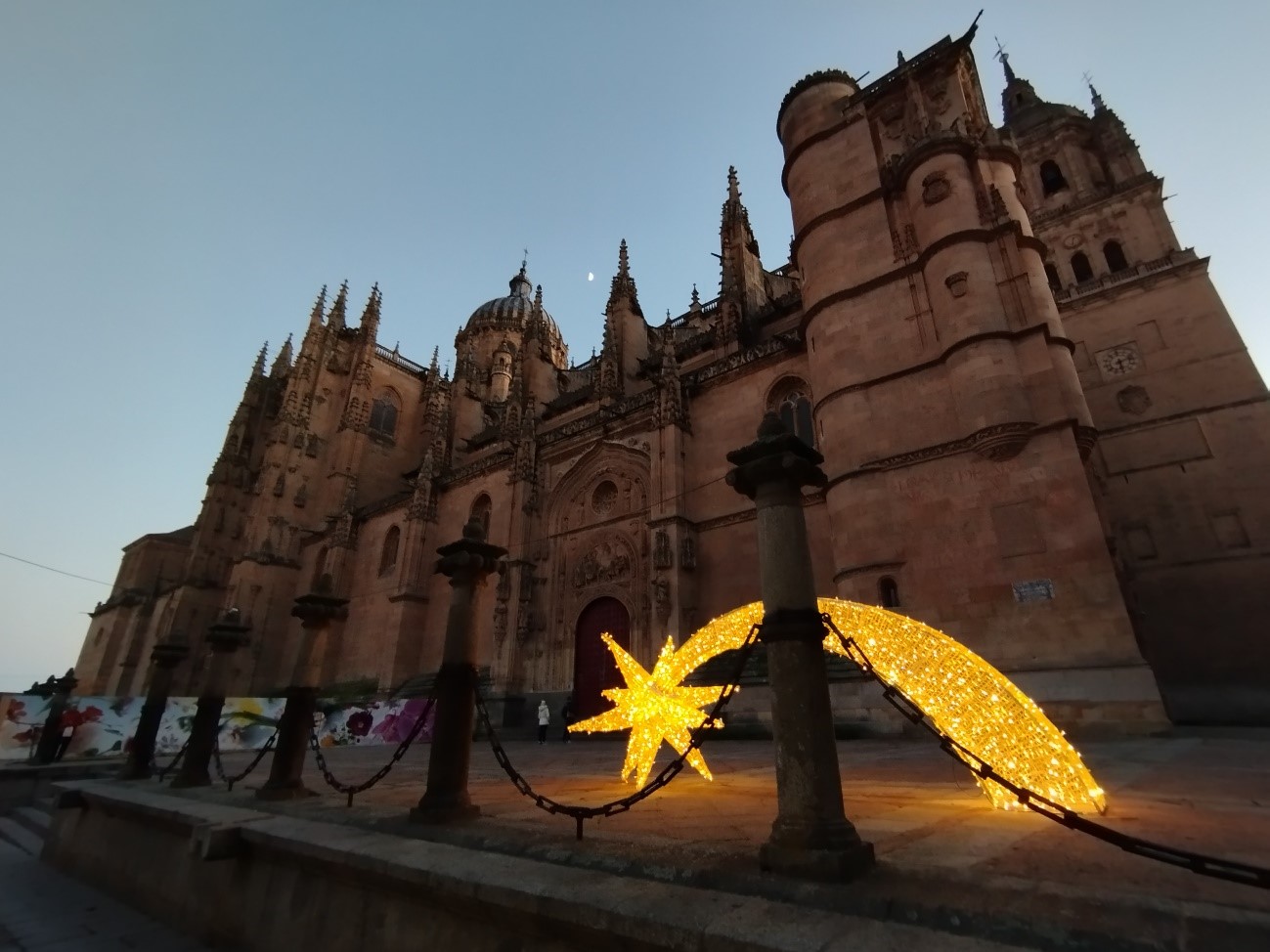
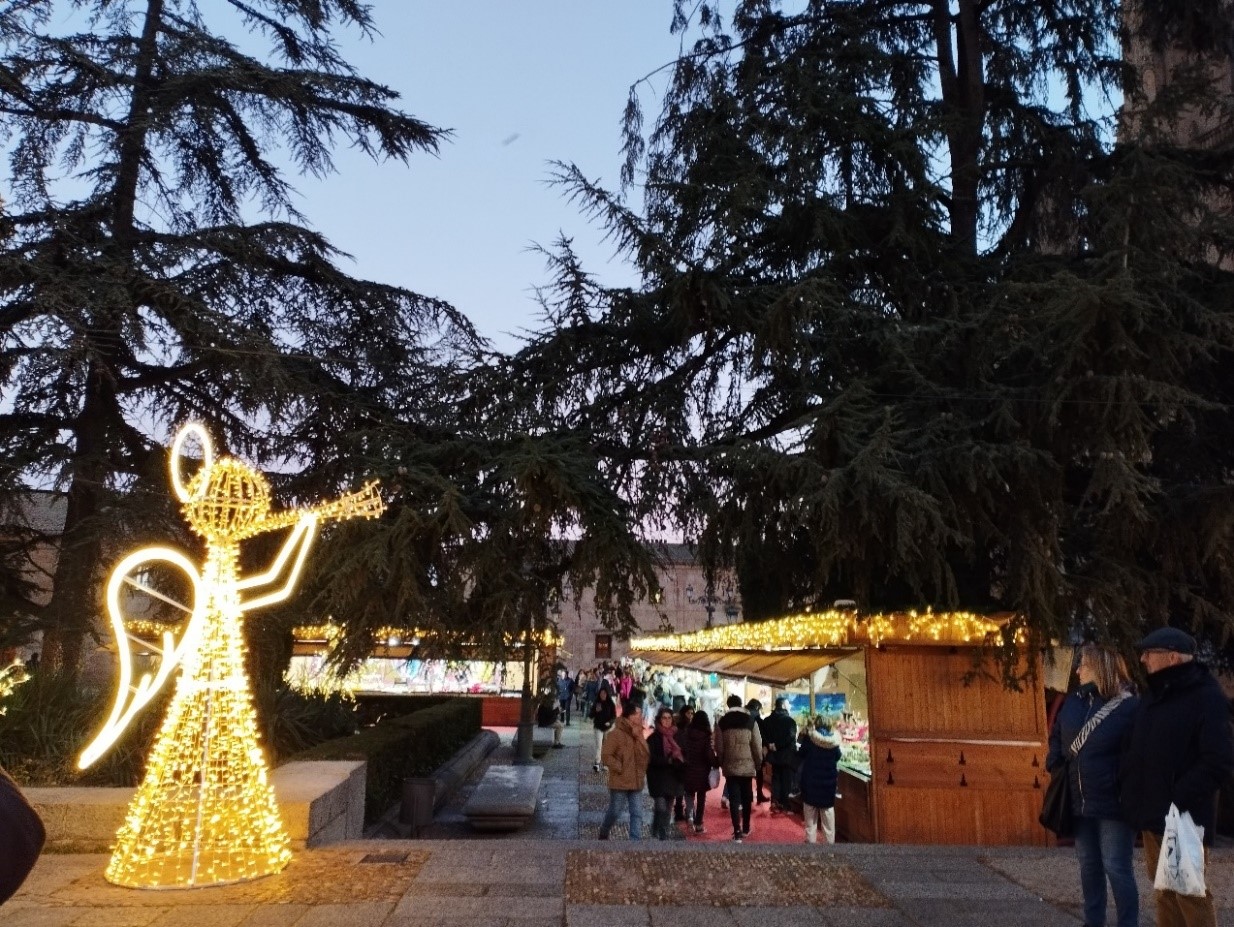
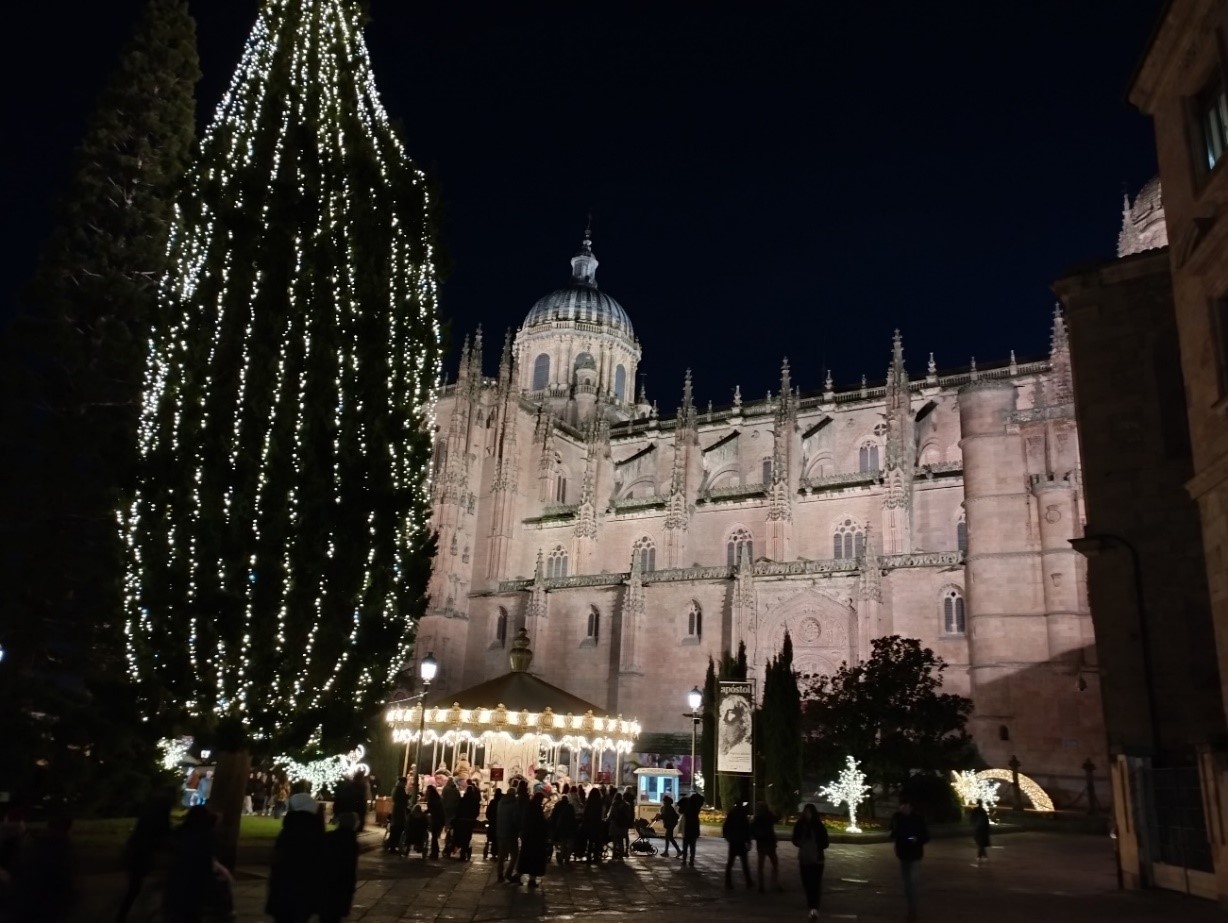
November Activity Report
30 November 2023
Global Japan Office Coordinator
KUBO Masako
The day after Halloween (31st of October) is a national public holiday called ‘Todos los Santos (All Saints’ Day)’. After this holiday, the preparations for Christmas begin. The preparations include light-up illuminations and Christmas symbols all over the city. There is a store near the university that sells Christian books and other religious items, which has many nativity figurines for sale in the shop window, including some figurines dressed in the traditional costume of Salamanca (Photo 1).
Despite the exciting atmosphere around the city, November is a busy month with no days off at the university. ‘Language Day’ was held again on campus this year, where there are stalls for many different languages. This was a particularly successful event, with a constant flow of people all day - perhaps because the Japanese stall was mainly run by students this year (Photo 2).
This year is the ‘Year of Japan’ at the University of Salamanca. There have been many events and lectures, including an annual Spain-Japan Council Foundation symposium which was held at the University of Salamanca this month (Photo 3). Only experts could attend this event as it was closed to the public, but there were still 100 people who gathered and exchanged knowledge. This foundation focuses on science and business. As someone involved in Japanese language education, this was an eye-opening experience for me to see how we can better develop people who can contribute to society.
Also, I spotted a ‘Japan’ themed section of the public library aimed at children up to the junior-high and high school levels. It was a colourful introduction to Japanese culture, ranging from traditional topics, such as sumo or bonsai, to more popular topics, such as anime and movies (Photo 4). Salamanca is a small, inland town with a closed-off feel, but I felt as though I should promote an understanding of Japan by making the most of the current boom in interest towards Japan, especially among young people.
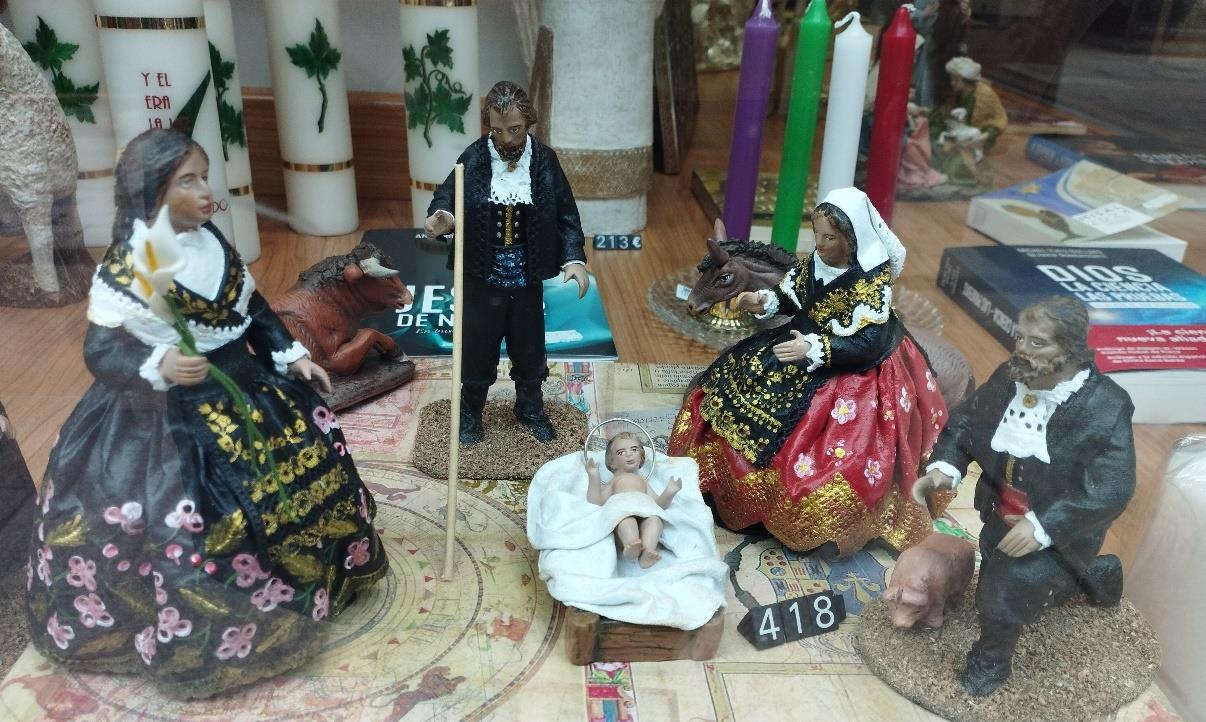
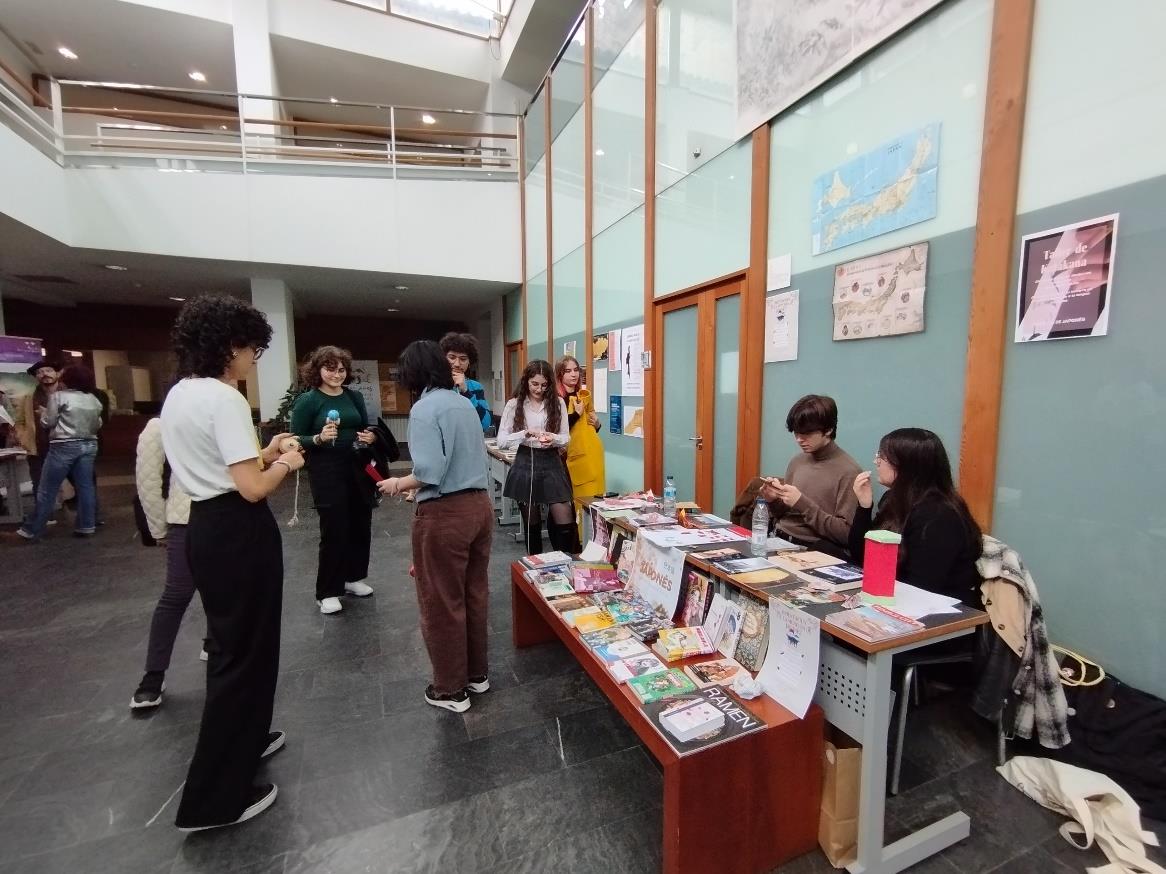
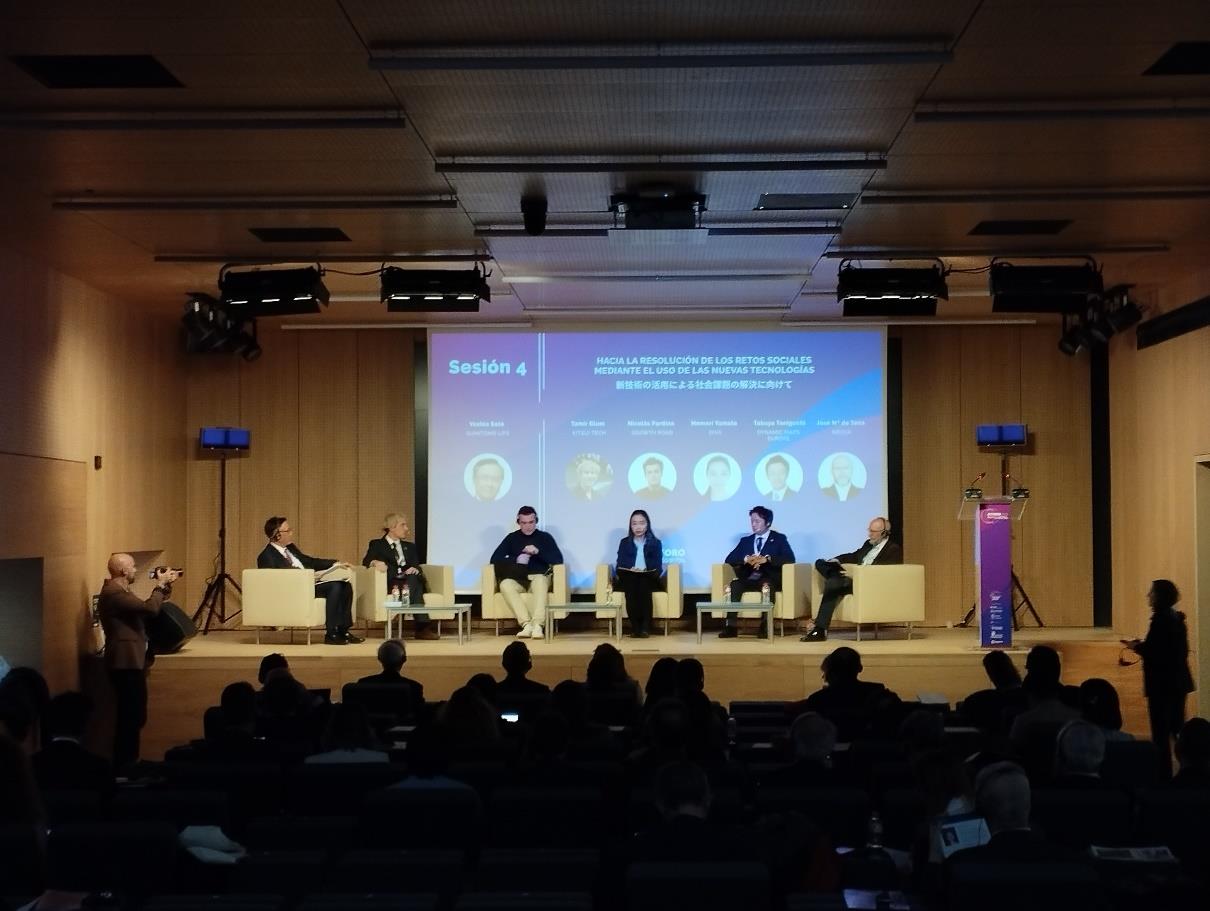
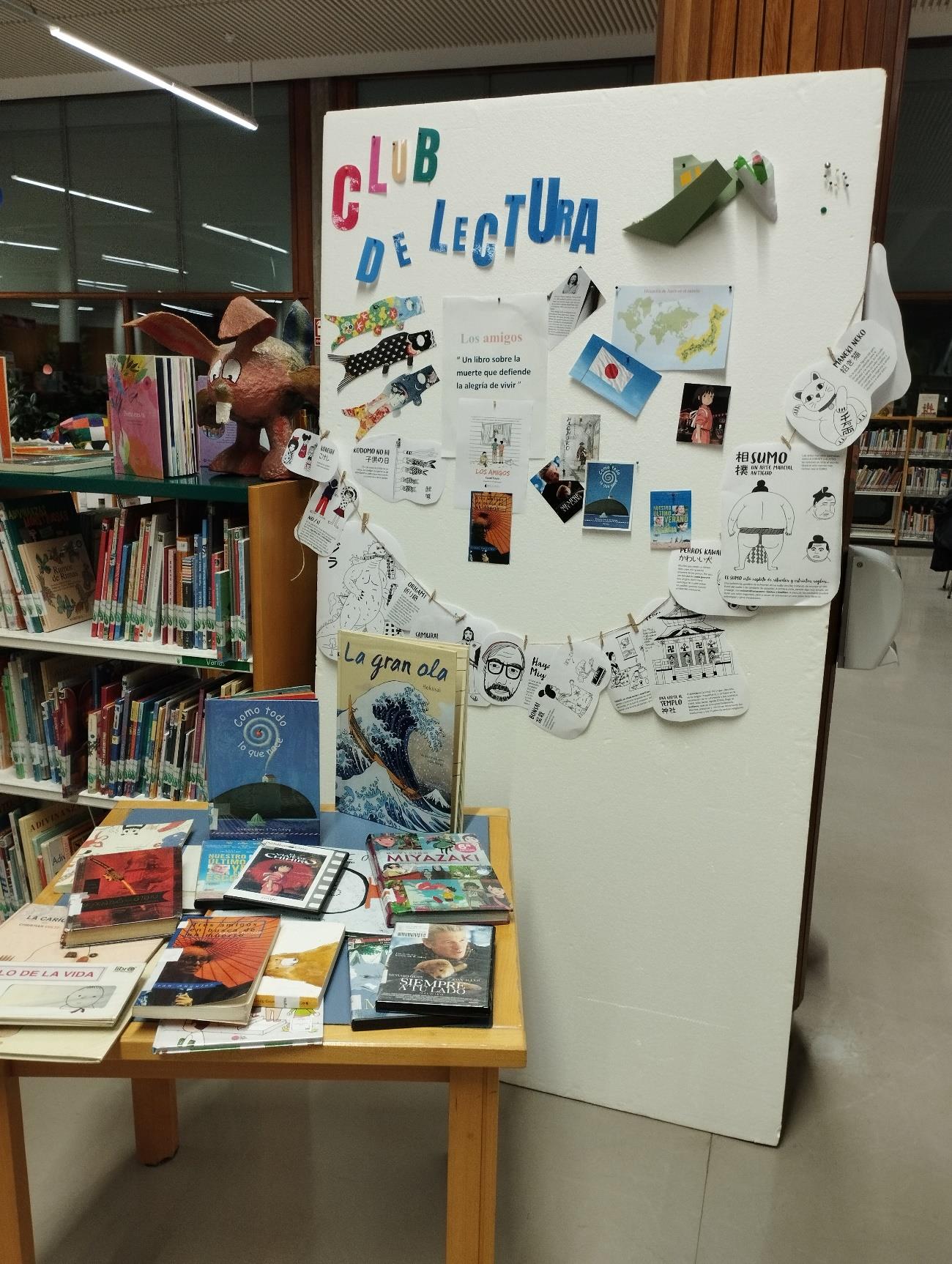
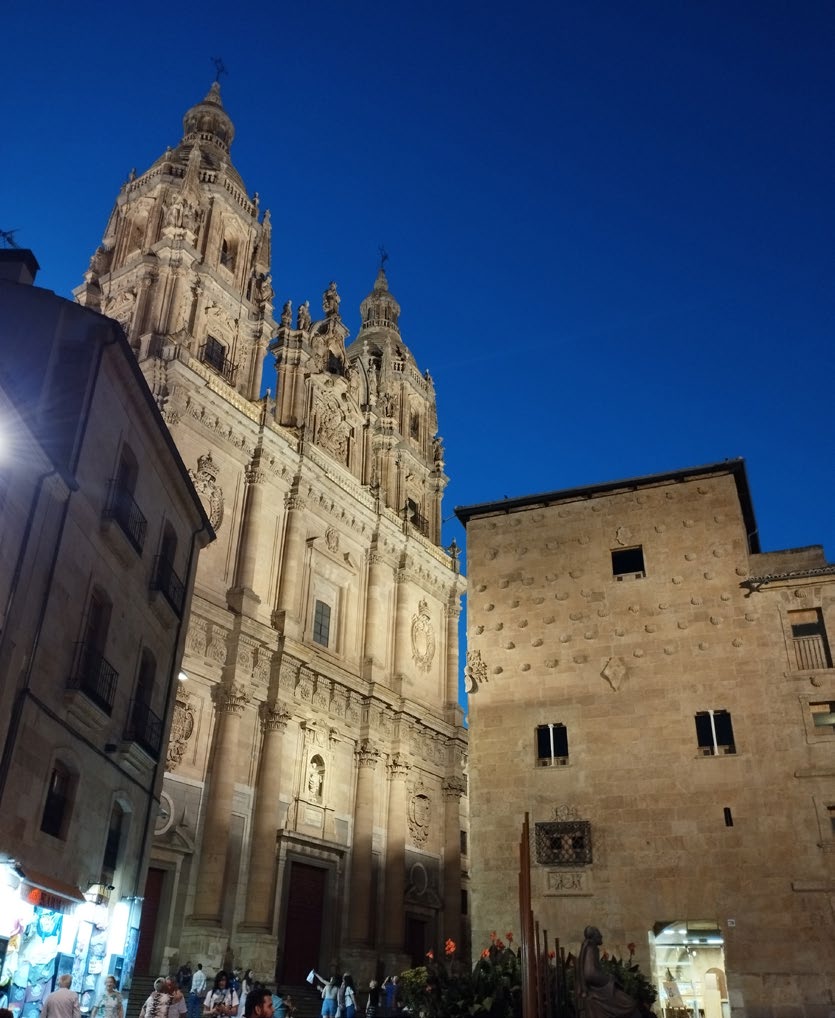
October Activity Report
31 October 2023
Global Japan Office Coordinator
KUBO Masako
The summer weather has continued even into October, but the cold winds of winter suddenly arrived due to a low-pressure system. The weather was so bad that we even received a warning from the Embassy in Spain, but the wind and rain didn’t stop the tourists, and we saw many groups of tourists wearing raincoats all over Salamanca. There are also night tours where you can enjoy different views than when it is all lit up in the daytime (Photo 1).
There are also many university events in October. One of the highlights must be the visit from Sadako Fukui, a kurayoshi kasuri traditional craftsperson, whose visit will be deeply engraved in the memories of all who participated. Following an exhibition at the Paper Mill Museum in Barcelona, many of the exhibits were also shown. There was not only an explanation about kasuri, but there were also workshops, such as actually spinning yarn, weaving fabric, and trying on kimonos (Photo 2 & 3). The students also participated in a lunch, an exchange of songs, and a tour of the city, so I think it was an excellent experience for the Japanese language students (Photo 4). Looking at the responses to the survey after the event, it was clear that the students were deeply moved by the polite and kind guidance they received from the Japanese participants, and there were many requests for similar cultural events like this in the future.
During the guided walk around the city, we passed many university facilities, such as the Literature Department, the Translation Department, and the Geography and History Department, so the question of “Where is the actual campus?” was brought up. The University of Salamanca is a comprehensive university, so the many different departments and facilities are spread across various locations. The most historic ones are concentrated near the cathedral, but you could say that they are integrated into the city. Looking at this beautiful scenery, everyone says “I can’t believe I get to study in a place like this!”.
The exchange students get to have such valuable experiences. The language exchange sessions started this month, and around 50 students attended since the participation requirements were expanded (Photo 5). At first, I couldn’t cope with such a big event, but I have gradually become used to it. Some participants even said that the time wasn’t long enough, so I suggested that perhaps they could continue the session by going out to a cafe together after the event.
Every day I feel the history of the University of Salamanca and Salamanca itself, a city that has attracted the attention of people from around the world since ancient times. Countless people, including many Japanese students since the 20th Century, have come to Salamanca to study not only the Spanish language, but also to research Spanish literature. I feel that with Salamanca as a base, you can expand and deepen your connections (Photo 6).
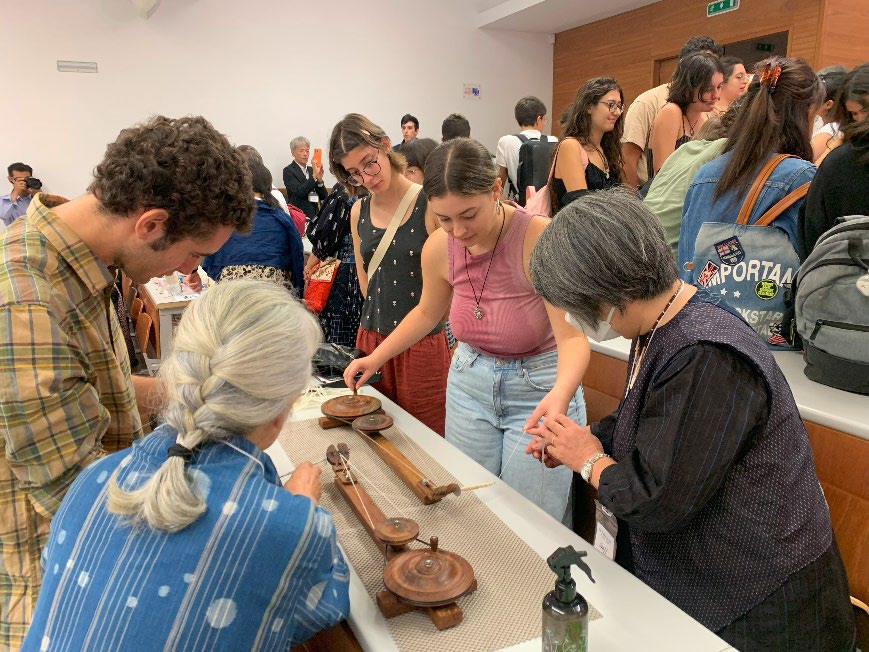
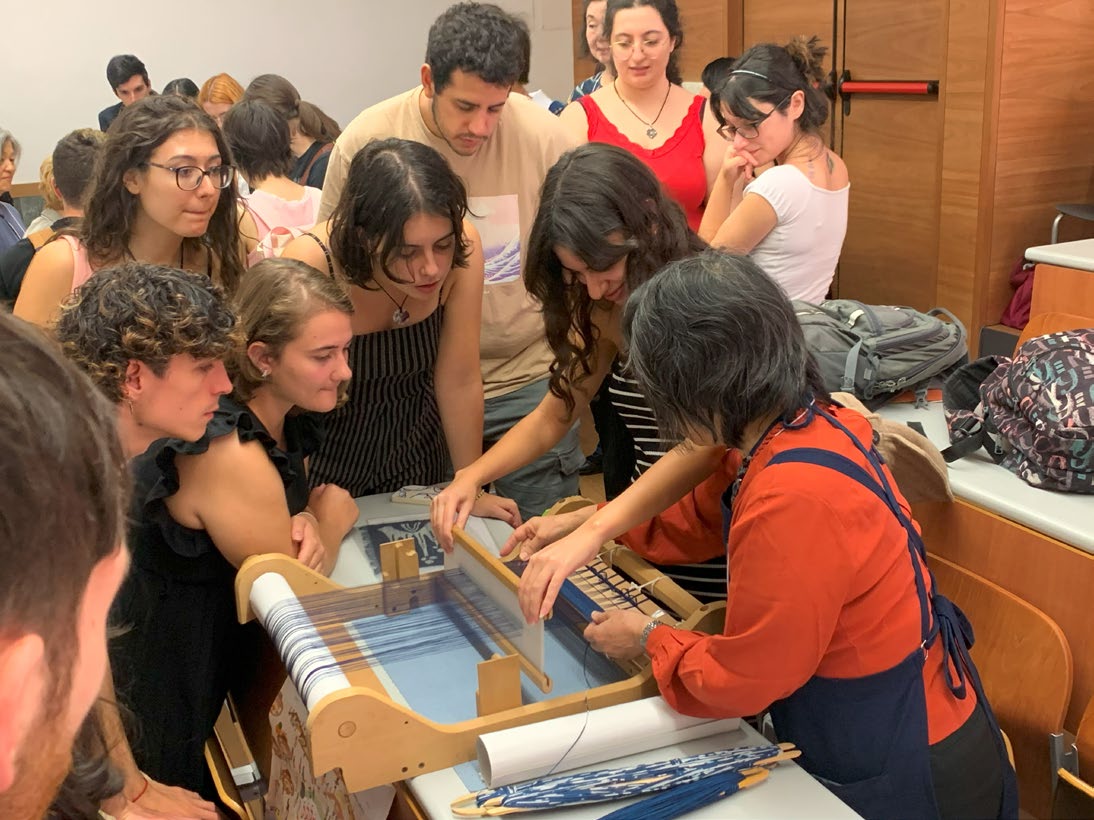
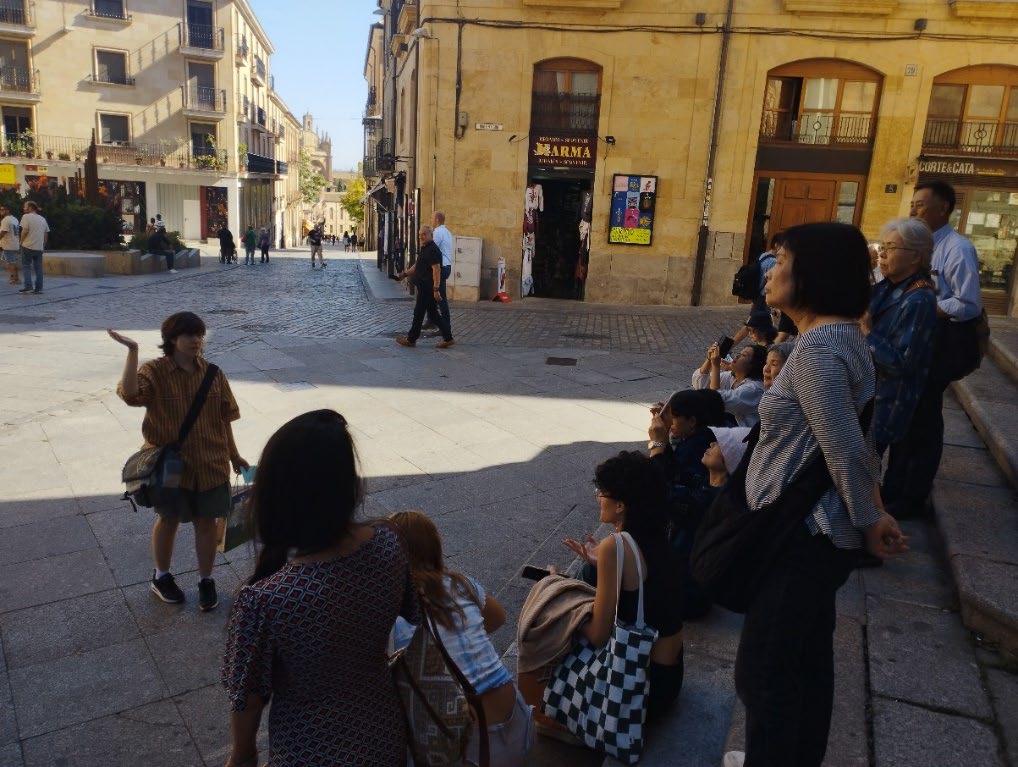
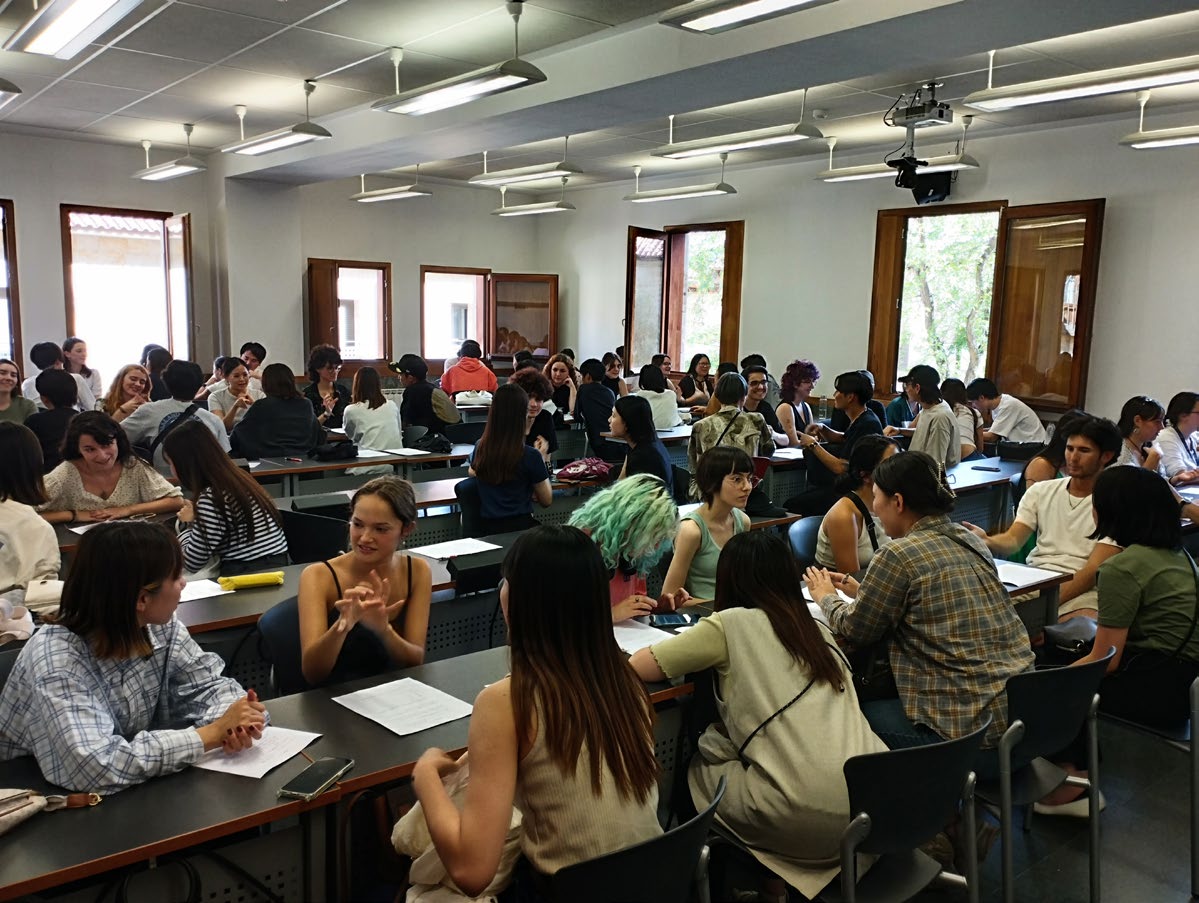
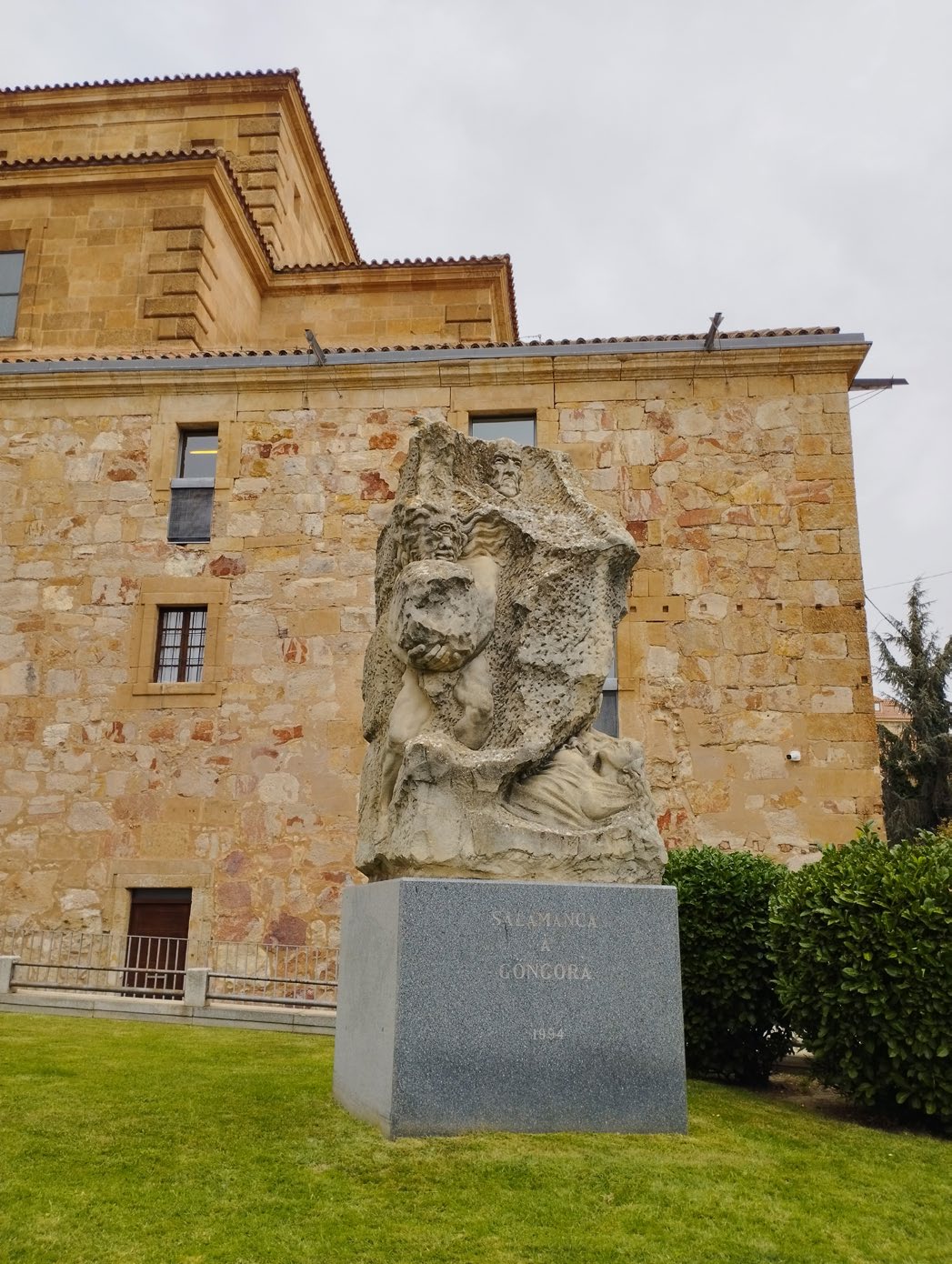
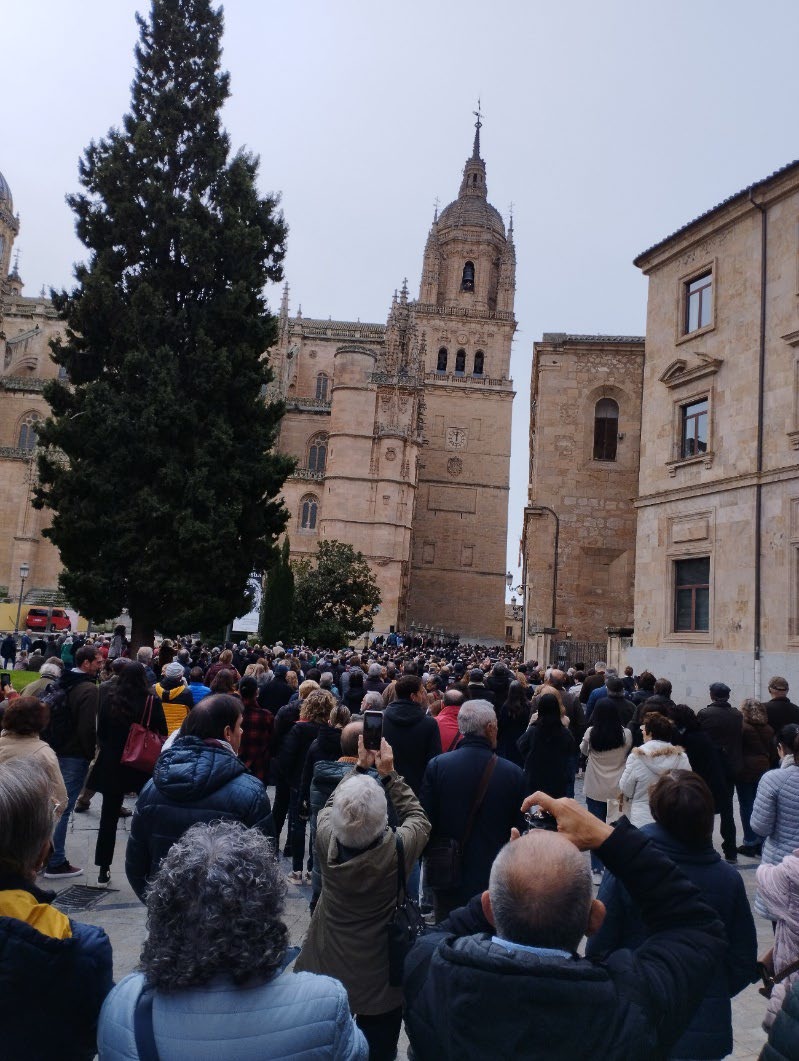
September Activity Report
30 September 2023
Global Japan Office Coordinator
KUBO Masako
The university council decided the academic calendar for 2023 at the end of March. They decided that the first day of the academic year after the summer vacation would be the 1st of September, which is the earliest start date ever. Even though there was a proviso that the start date of classes could be adjusted by each faculty, no one could hide their frustration when the news was first announced. I soon found out that the classes for the Department of Literature would start in the third week of September, which was a relief, but I can see that the university wants to follow the trend of universities around the world that start classes at the start of September.
Many towns in Spain observe the 8th of September as a public holiday, and the Feast of the Virgin de la Vega is celebrated on this day in Salamanca. It is said that the Patron Saint Vega protected Salamanca from military attacks during the War of the Spanish Succession. Even today there are many people with ‘Vega’ as part of their name. There is a festive mood in the streets of Salamanca for about 10 days after this holiday, with various events taking place, such as a temporary amusement park, music concerts by famous musicians, and street acrobatics. Salamanca continues to embrace the tradition of a long summer vacation so it will be interesting to see how the university’s new policy will impact the old traditions of the Department of Literature or even Salamanca itself.
As usual, the Department of Literature held an orientation and welcome party for the new students on the 12th of September (Photo 1), classes started on the 18th of September, and the university’s official opening ceremony was held on the 25th of September (Photo 2). This month also had many commemorative events, such as the Doctorate Award Ceremony where Nobel Prize in Physiology or Medicine winner, Shinya Yamanaka, received an Honorary Doctorate from the University of Salamanca (Photo 3).
The first week of semester is an adjustment period for course registration, but to be honest, there are some classes that are held 2-3 times in the week so there is not much time to hesitate. Careful consideration is necessary for students taking courses between different faculties. You must get your classes and your university routine all organized by the middle of September. Since the university is a comprehensive university, the campus is huge, so you have to travel near and far to get your student card or make a university account. Office hours in each department are different to those in Japan so you should also be careful about that.
I think it is a very valuable experience for you to be able to spend your time as an exchange student at the University of Salamanca, located in a World Heritage designated city. You can use the library in the façade of the University of Salamanca for free and get a discount at the official shop using your student card. You can also enter the New Cathedral of Salamanca for free as a resident of Salamanca. Please make the most of the benefits available to you as an exchange student.
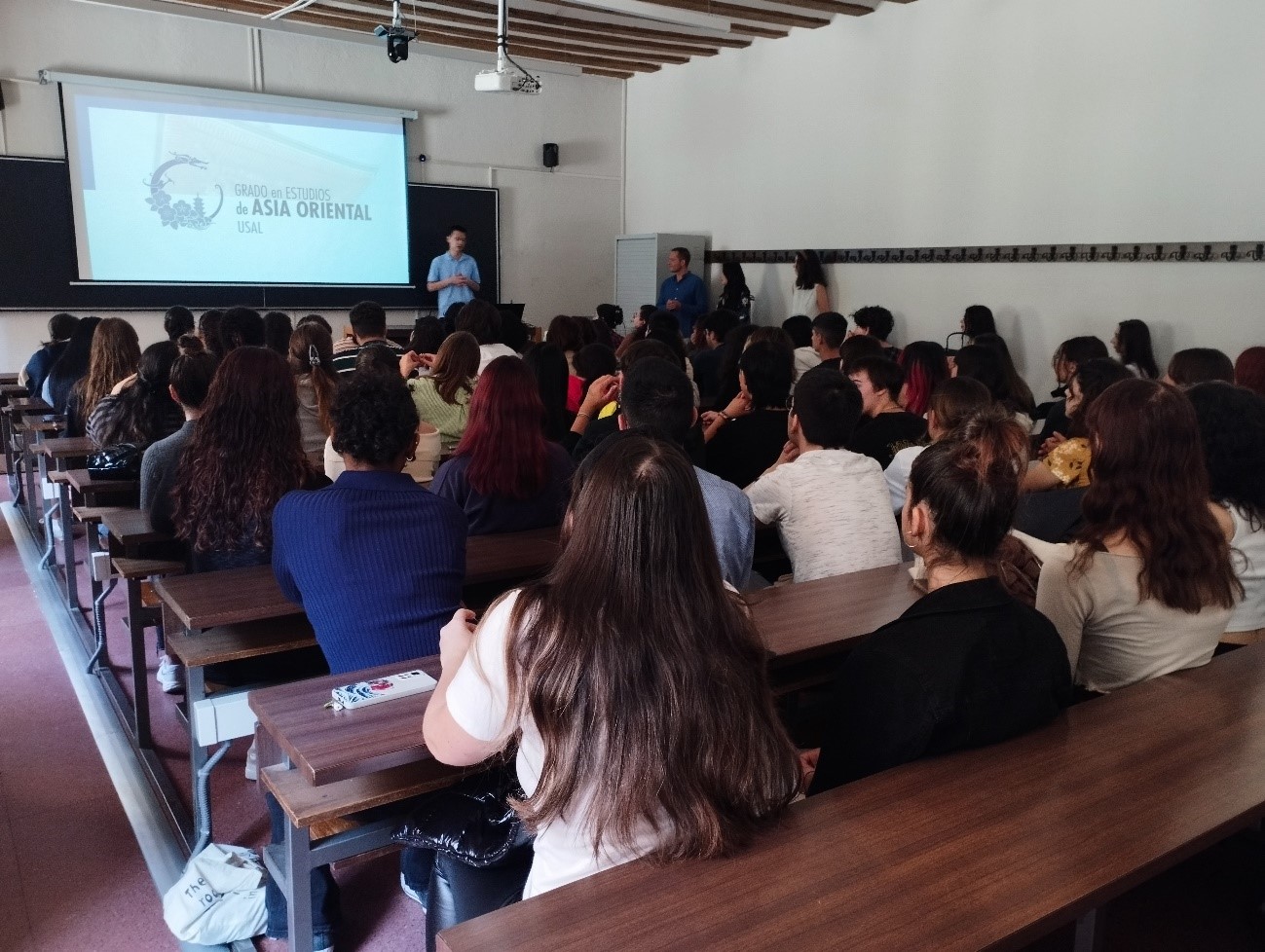
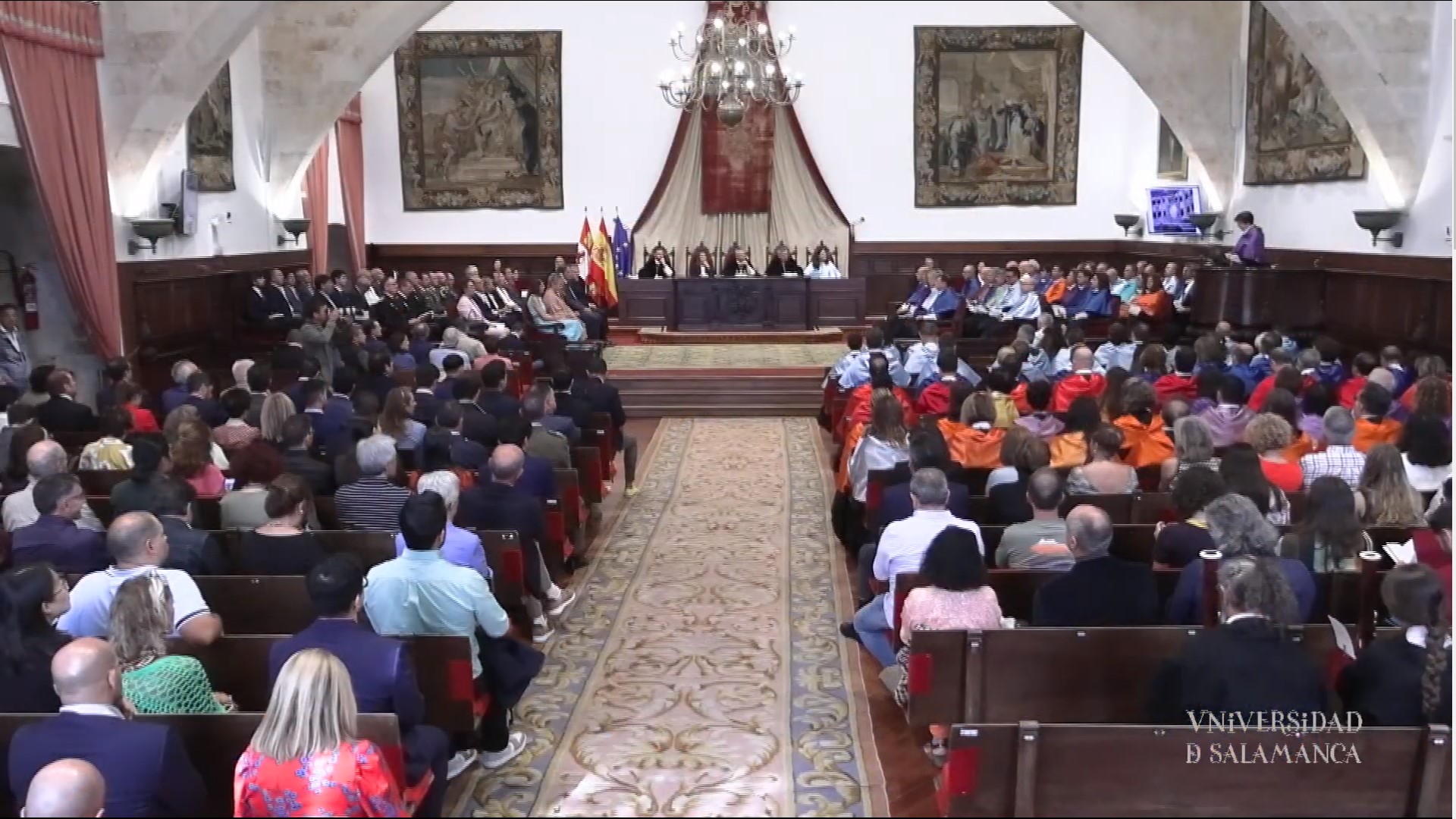
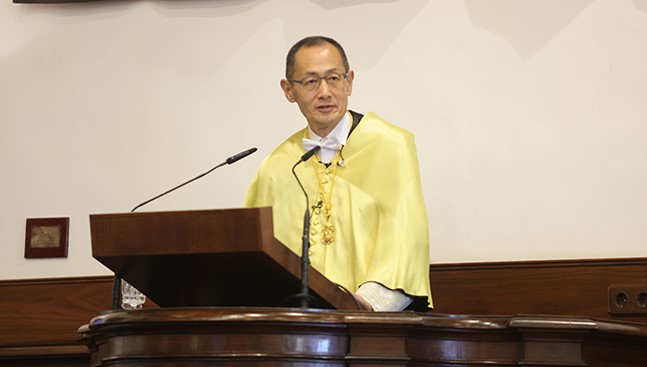
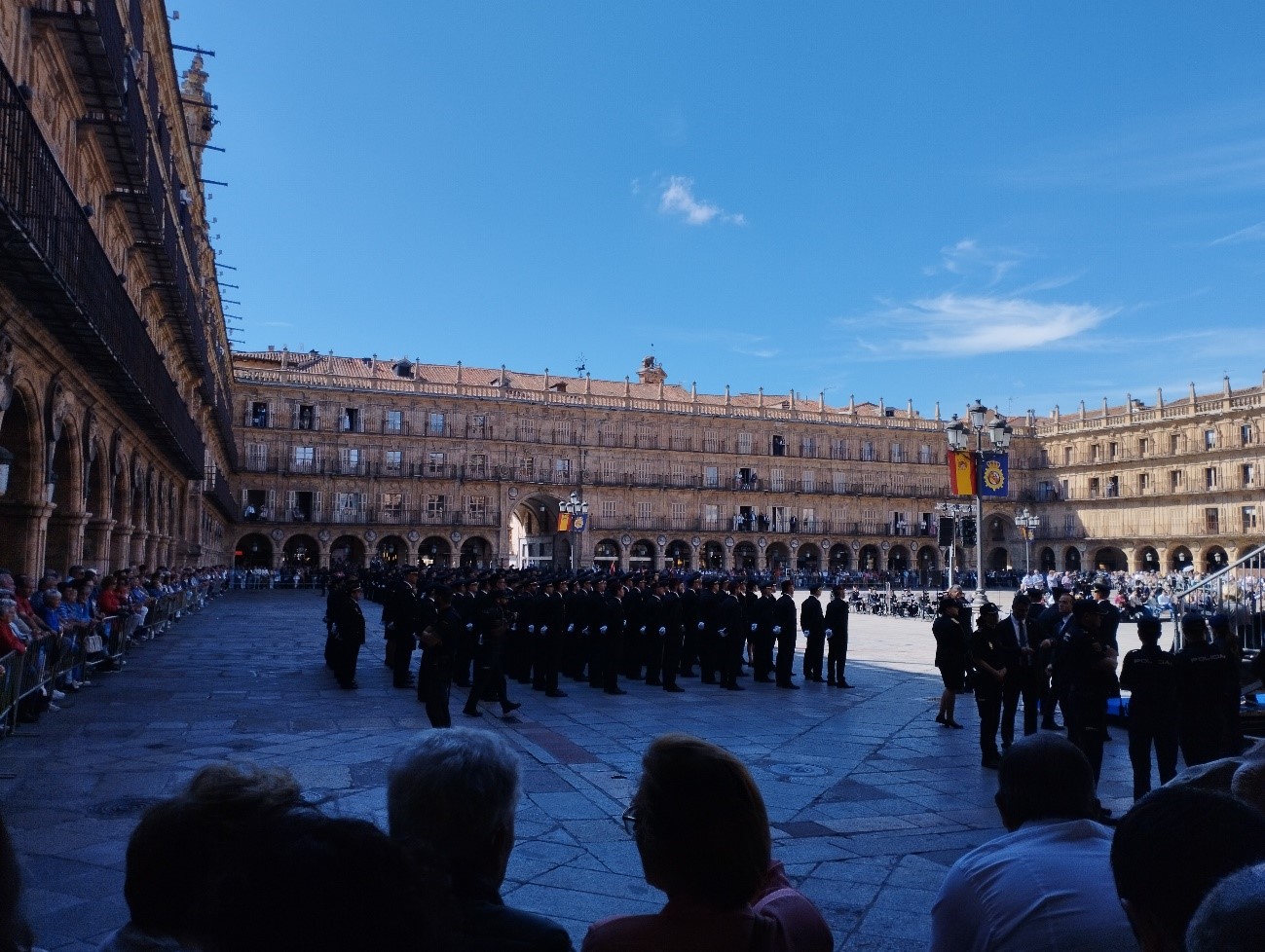
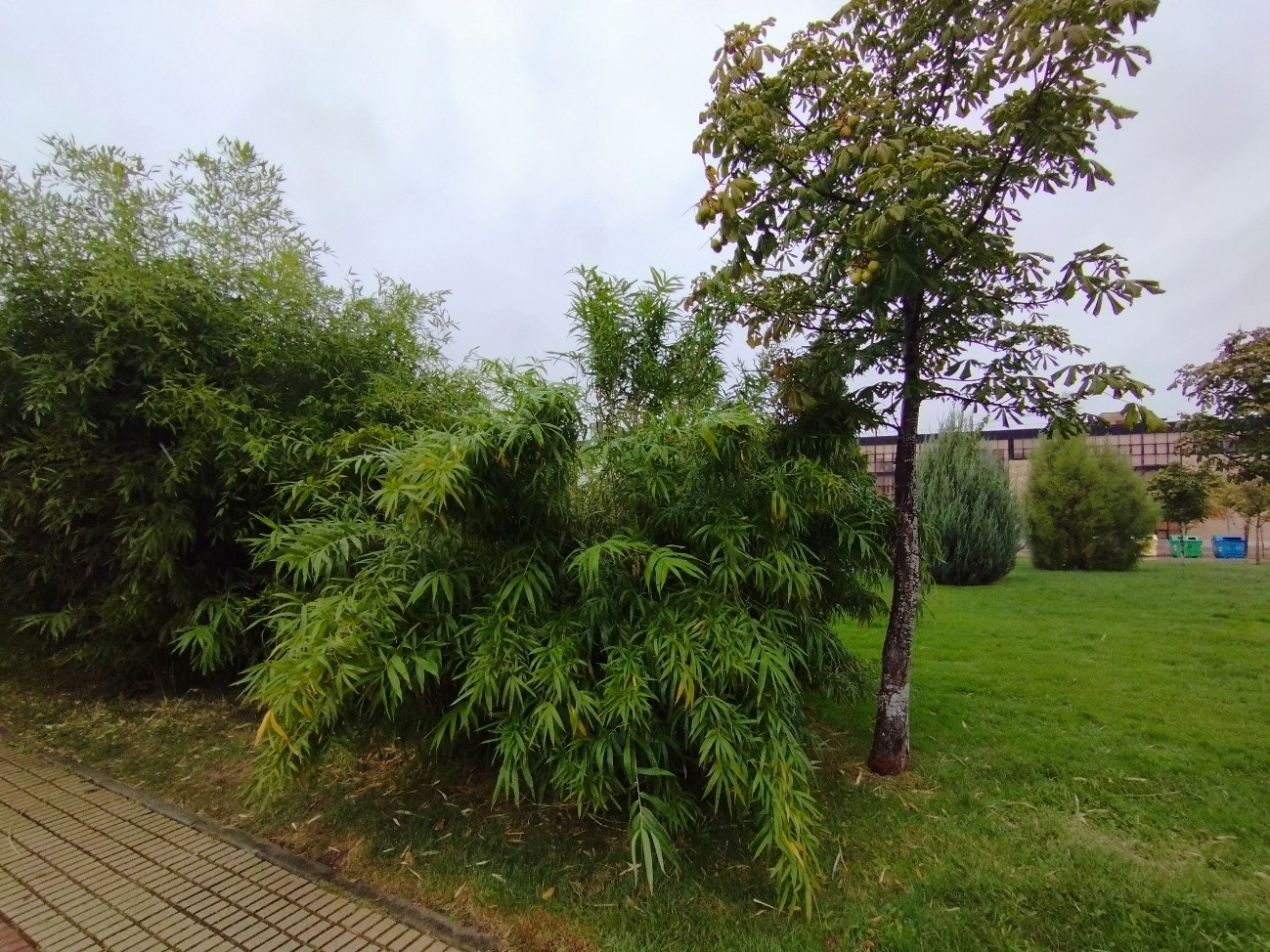
June Activity Report
30 June 2023
Global Japan Office Coordinator
KUBO Masako
Finally, the long, long exam period has finished. When June arrives, the temperature keeps rising, but Spain still has many ways to keep the heat out of buildings, even when many are still without air conditioners. Contrary to the mornings and the evenings, which are cool enough to require a jacket, it is hard to avoid sunburns due to the strong sunshine in the daytime. Unlike Japan, where people carry towels due to humidity, people here keep seeking shades, resting in parks with fountains or water features, or taking folding fans. In the university, we keep the front door closed to stop the sunlight from raising the indoor temperature. Still, as the room temperature rises during the afternoon, many places apply the summer schedule after the middle of the month and adjust working hours so that morning shifts end around 2 pm. Plus, pools are opened, and summer bargains start after the standard university admission tests are all finished, along with year-end presentations, graduation ceremonies, and elementary, junior, and high schools. It feels like the dazzling summer is arriving when many want to use part of their paid vacation. No wonder, as summer solstice approaches, there will be many events everywhere.
In the middle of that, fourth-grade university students and Master’s course students are still working hard to finish their thesis on time. Moreover, from this year on, there will be additional thesis presentations for the undergraduate program, and everyone now has a 20-minute face-to-face presentation. Lots of students are going in and out of classrooms to have offline review meetings since online meetings are basically not possible at Salamanca University. It is very crowded; students return to Salamanca to attend these 10-20 minute meetings. Students were thoroughly prepared and skillfully used presentation tools such as PowerPoint; they made their presentations proudly without reading, and the presentations’ quality was remarkably high. There were many themes related to Japanese culture and literature, but only one or two regarding the Japanese language. Still, this year, I did not only find many themes about the Japanese language, but there were also contents for Japanese about language learning and language education, such as Spanish, and I strongly felt the urge to watch over the paths of new graduates.
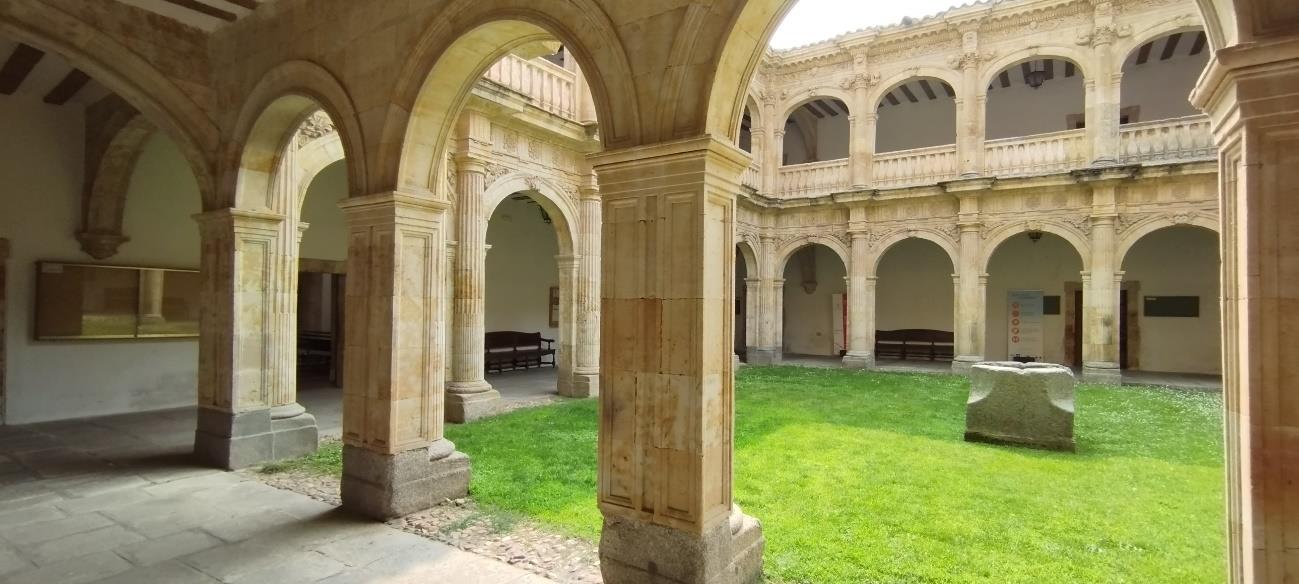
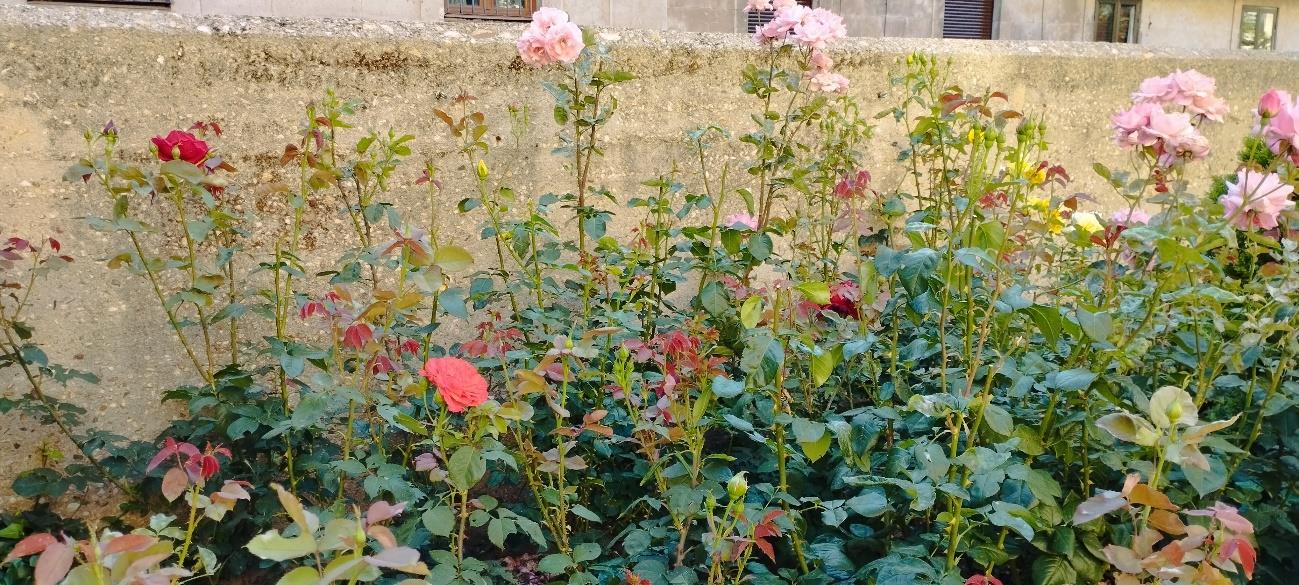
May Activity Report
30 May 2023
Global Japan Office Coordinator
KUBO Masako
In the Department of Literature, we have come to the end of the classes for the current academic year. Especially for fourth-year students, the end of classes marked their last university days. As the good weather continued, there was a secret wish to try an outside class, and, just right at that time, we got the chance to attend the newly opened "Essential Characters" exhibition in the Hispanic-Japanese Cultural Center as an extracurricular class. The exhibition in the hall of S.M. La Emperatriz Michiko (Empress Michiko) displays art pieces that "viewed science as art" taken from Japanese elements and touch the mysterious novelty of original objects. In fact, we prepared several plans if we had extra time due to the few exhibits. Still, every artwork invited many views from students of Japanese, and it was very refreshing having a very active exchange of views that inspired various ideas. (Photo 1)
One year has passed, and this month will mark the temporary end of the language exchange meetings. Despite being busy with submitting assignments and taking exams, everyone kept coming until that last meeting, perhaps seeking a room to have a break. And even though we talked about having our next exchange meeting in a new place with an informal setting, Café Becker, we reluctantly disbanded. I look forward to the start of the next meeting, thinking about how the connection among the participants will completely change and wondering what kind of atmosphere we will experience. However, since tests will start right after the end of classes, I can see how students rush to study day and night in the library and study halls. Still, places where students congregate are not limited to study areas alone. Areas around the library, such as bars and supermarkets, are flooded with more students taking breaks than during-class periods. (Photo 2)
On the 25th of May, a lecture was held about "Japanese Rice and Spanish Rice" at the Department of Literature's auditorium while the president of Kanagawa University was visiting the University of Salamanca (Photo 3). The speech was made using Japanese and consecutively interpreted into Spanish. I believe it was a valuable and fulfilling lecture for students since they could listen to the discussion about Japanese culture in simple Japanese and then confirm the content in Spanish. In Spain, rice dishes are trendy, but in Japan, rice consists of an additional sense of sacredness, serves as a driving force in economic activities, and plays different roles that the Japanese people appreciate; they cannot help but to be impressed with it. Reflecting on the fact that different meanings of various life aspects could be viewed differently in Japan and Spain, allowed me, once more, to realize that learning about different cultures widens our worldview.
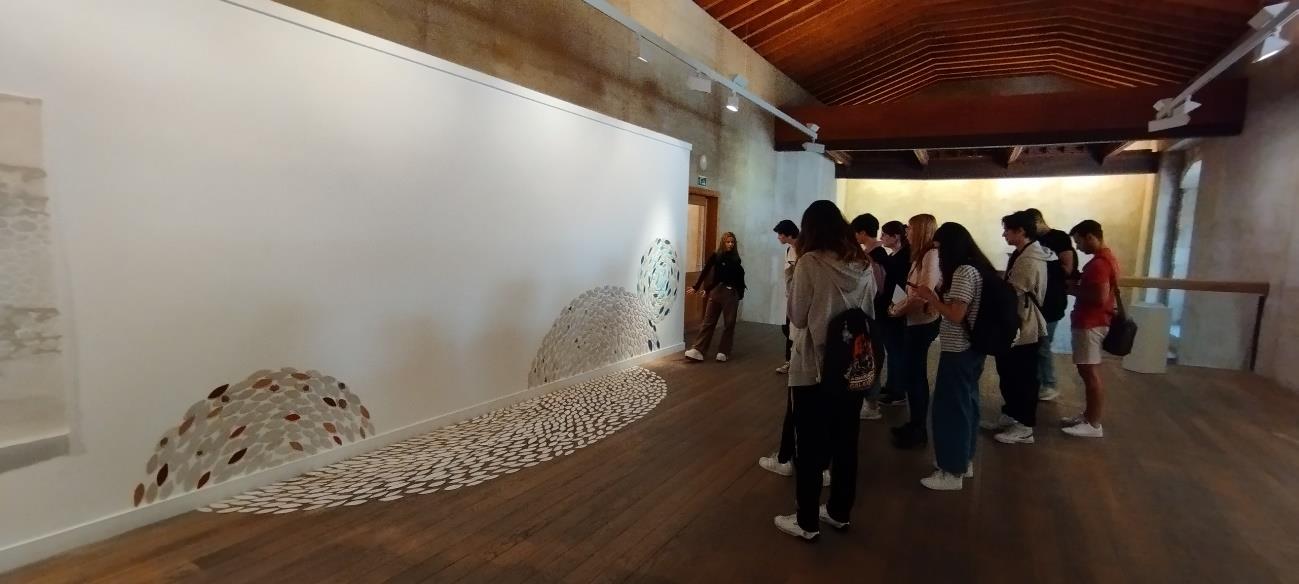
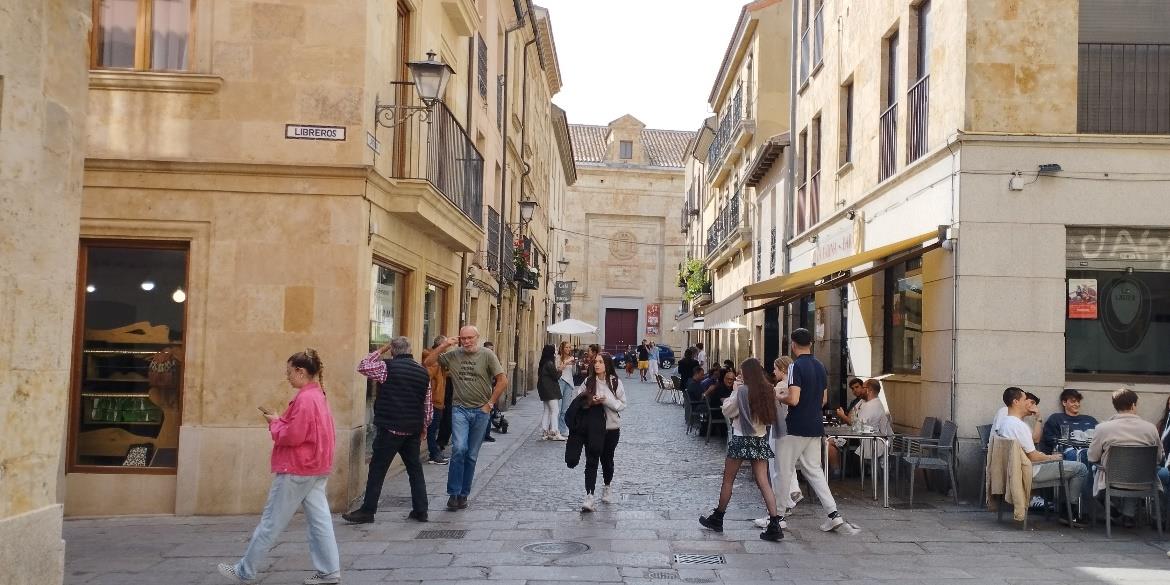
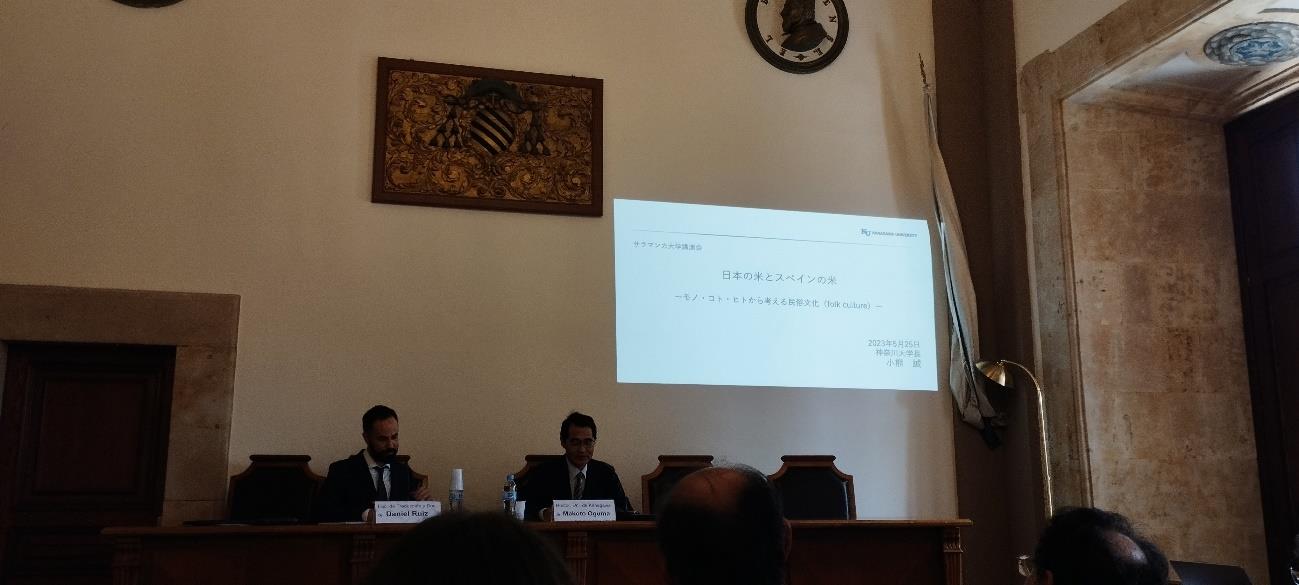
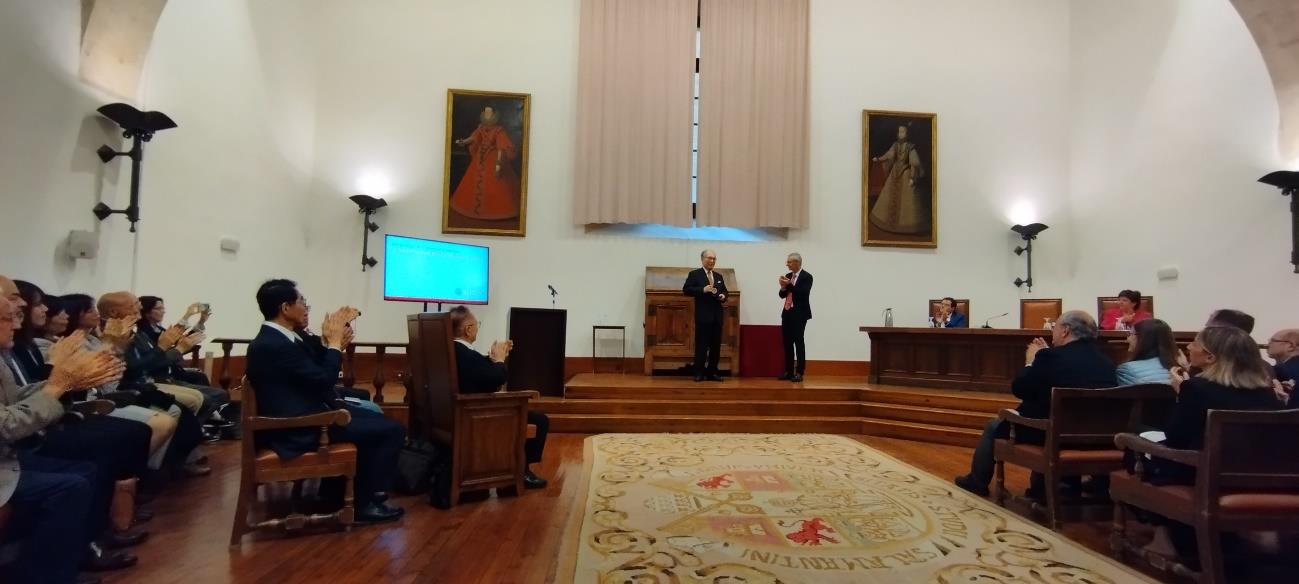
April Activity Report
30 April 2023
Global Japan Office Coordinator
KUBO Masako
During Semana Santa, because some dorms are closed and international students are not allowed to stay in dorms for around 10 days, it can be a good chance for them to travel around. Recently, there are many international students studying at Salamanca, so it is common for Japanese students to travel around Europe in groups with other Japanese. And when they return to Spain, they seem to be more aware of Spain's position in Europe. A week after the holidays, Salamanca has its own afternoon holiday called “Lunes de Aguas (Monday of the Waters)”. Every shops and others are closed in the afternoon, so everyone goes to a picnic with celebrating the end of Holy Week. However, from the morning onward, everyone is talking about where and with whom to spend the day, whether or not they have already bought the hornazo (pie filled with meat) that is an essential part of this holiday, and how the line to buy the hornazo is so long, and everyone is getting excited. At the end of this month, the day of the patron saint of the Faculty of Literature is celebrated, and the Faculty Festival is held. Beginning with an opening statement, on the Friday of that week, many students head out in costume to the Plaza Mayor and have a good time going from bar to bar. (Photo1)
At the end of the semester, and just before entering the exam period, I guess the students want to enjoy the festive atmosphere.
Vacations and festivals followed, but there were also many events, including lectures, competitions, theater and film performances, and exhibitions, a truly diverse series of events. Perhaps due in part to that, the regular language exchange meetings sometimes turned into a game tournament. (Photo 2)
At the briefing about Grant Program for Japanese Studies Projects by Japan Foundation, 4 alumni of University of Salamanca, who had received this grant, hold a roundtable session and gave talked about their experiences and advices for the students. While the briefing was for master’s students and researchers, some undergraduates also attended, and I felt that the students were able to envision their future and set goals. The alumni said their programs were for two to six month with a busy and packed schedule, and all four mentioned that they were completely immersed in study and research during that time. I felt that two months was a short time for a language program, but their Japanese had improved considerably, and I thought that even in a short period of time, if they could work hard on their plan, they could achieve a lot. (Photo3)
In a neighboring town, there was an exhibition of ukiyo-e prints from private collections, which included works by Hokusai, Utagawa Hiroshige, Kuniyoshi, Sharaku, and others, and I was amazed that I was able to see such works while in Spain. The presence of "Japan" could be felt in many places here (Photos 4, 5)
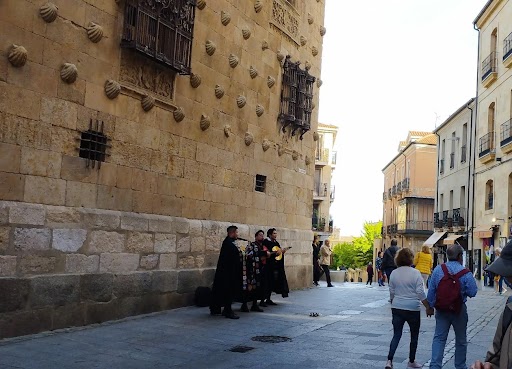
Photo1: there often can be seen people performing music in front of the House of Shells.
At this day, a student band was playing tuna.
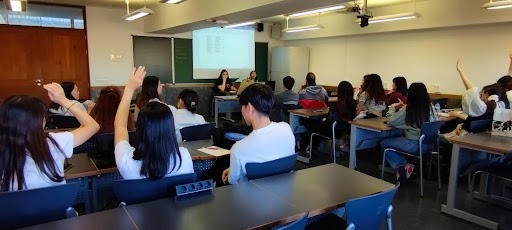
Photo2: Language exchange meetings became game competitions.
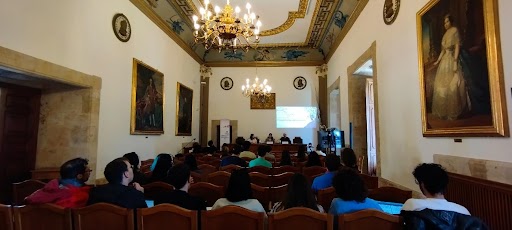
Photo3: many students are thinking about going into Japan research.
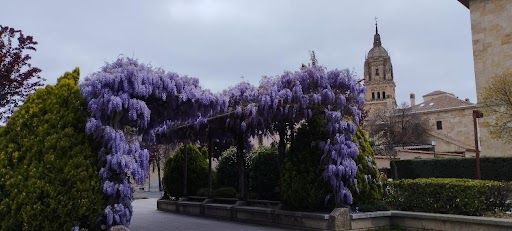
Photo4: behind the Cathedral, wisteria and irises are in full bloom.
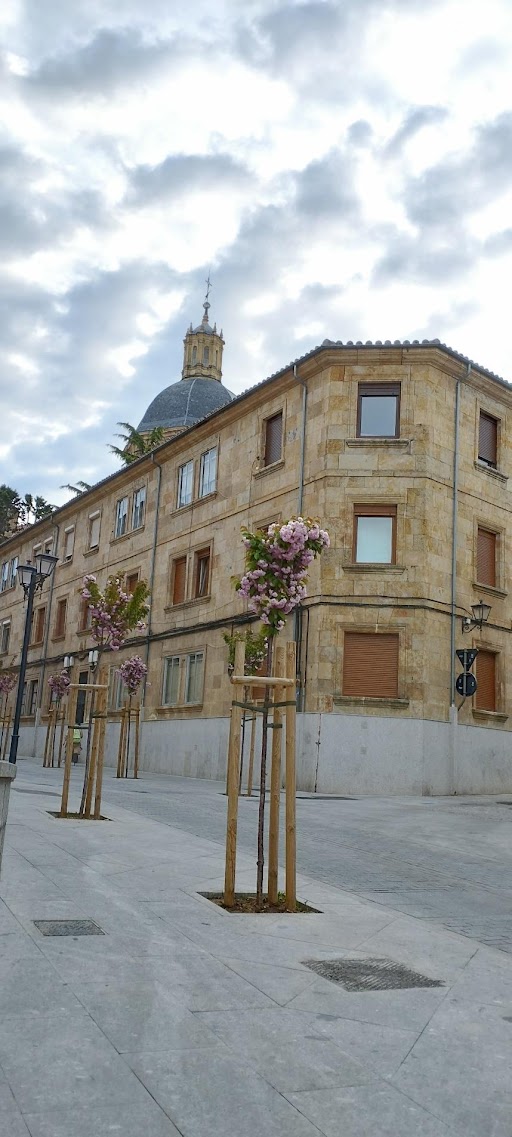
Photo5
